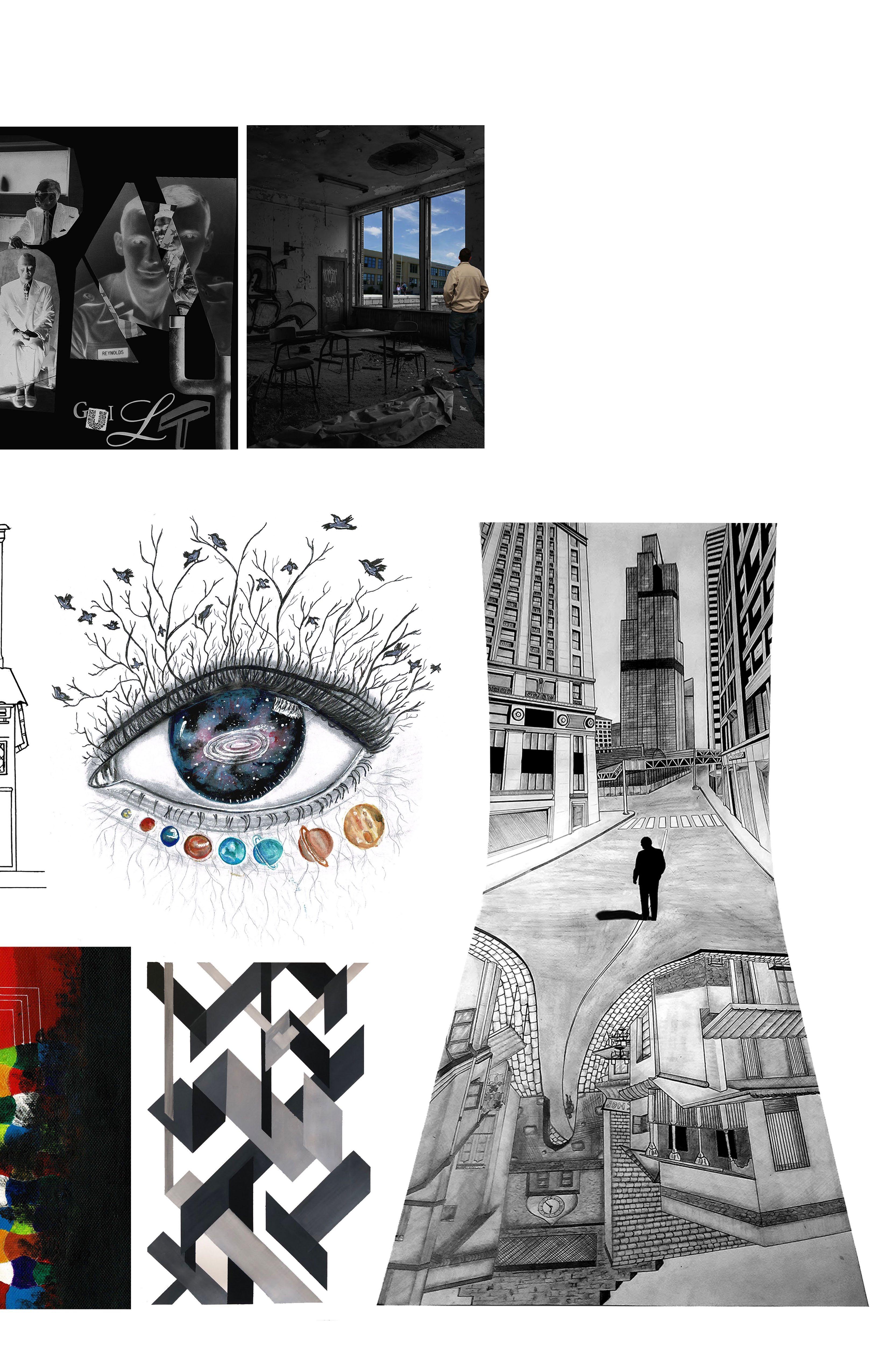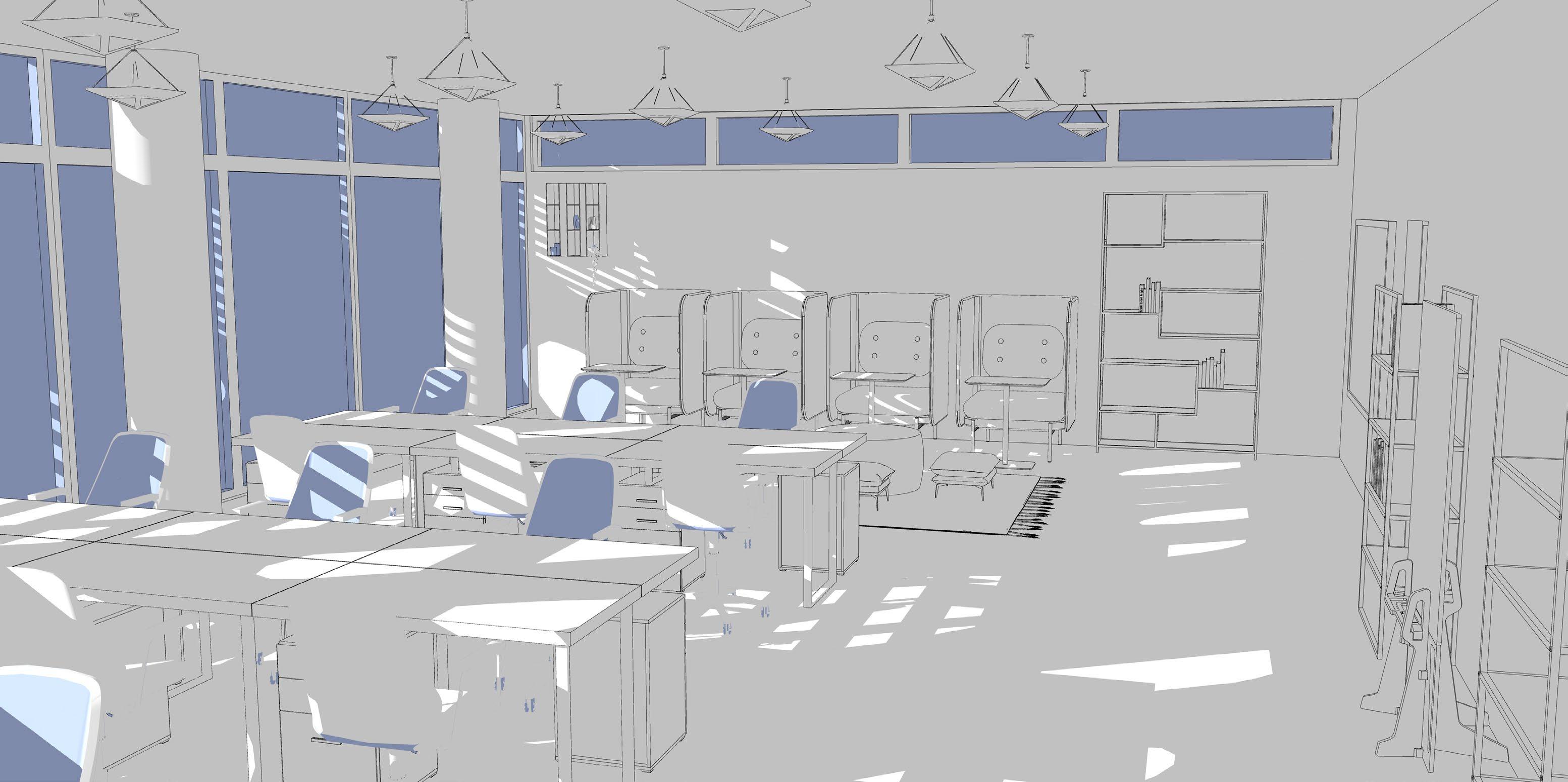
https://www.linkedin.com/ in/afsara-mobashira-raya-
https://issuu.com/afsararaya/docs/ raya_afsara_mobashira_portfolio_092923
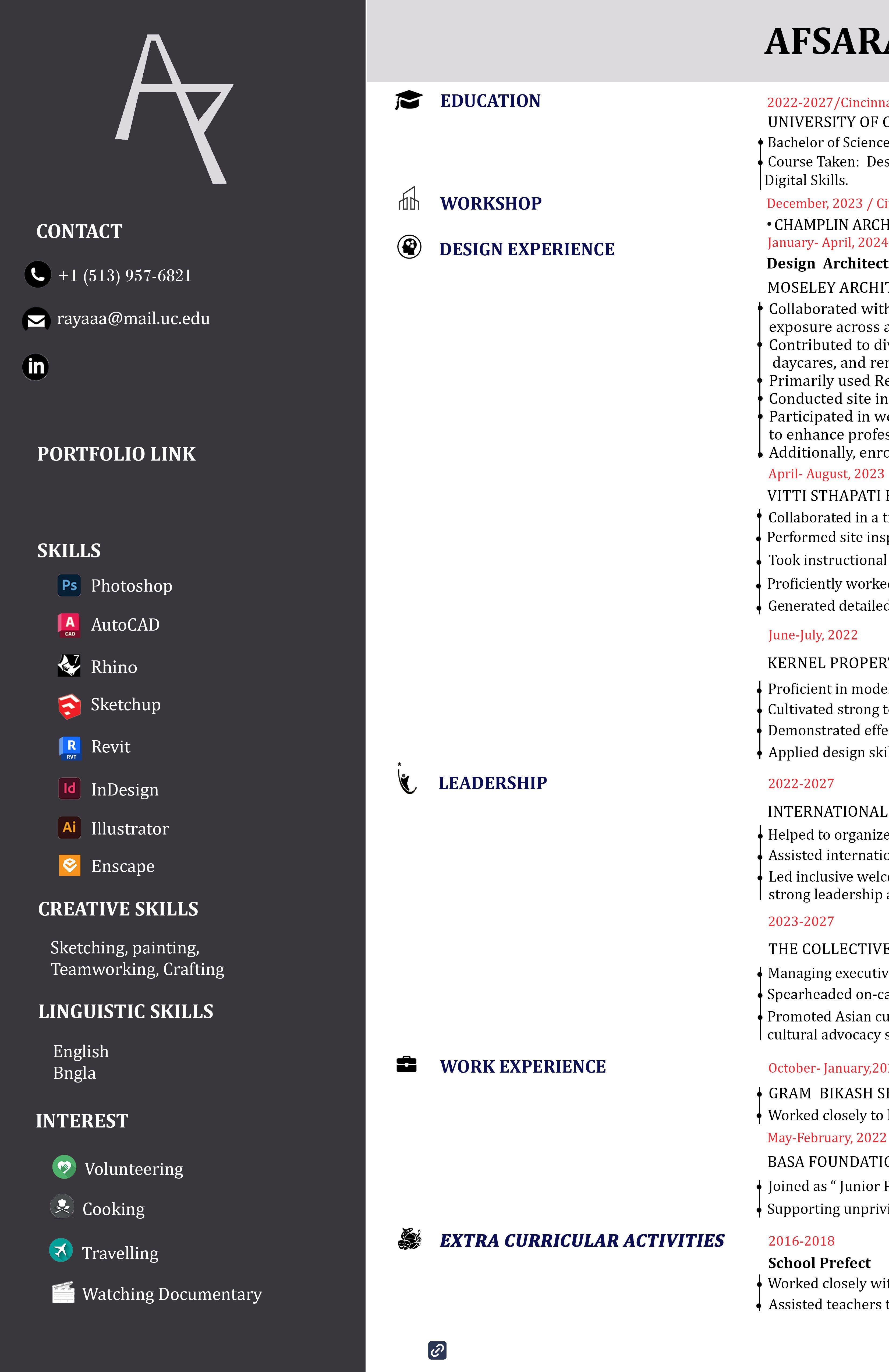
https://www.instagram.com/afsara_raya_arch?igsh=MTdhN2xwMHF4NnhrdQ%3D%3D&utm_source=qr
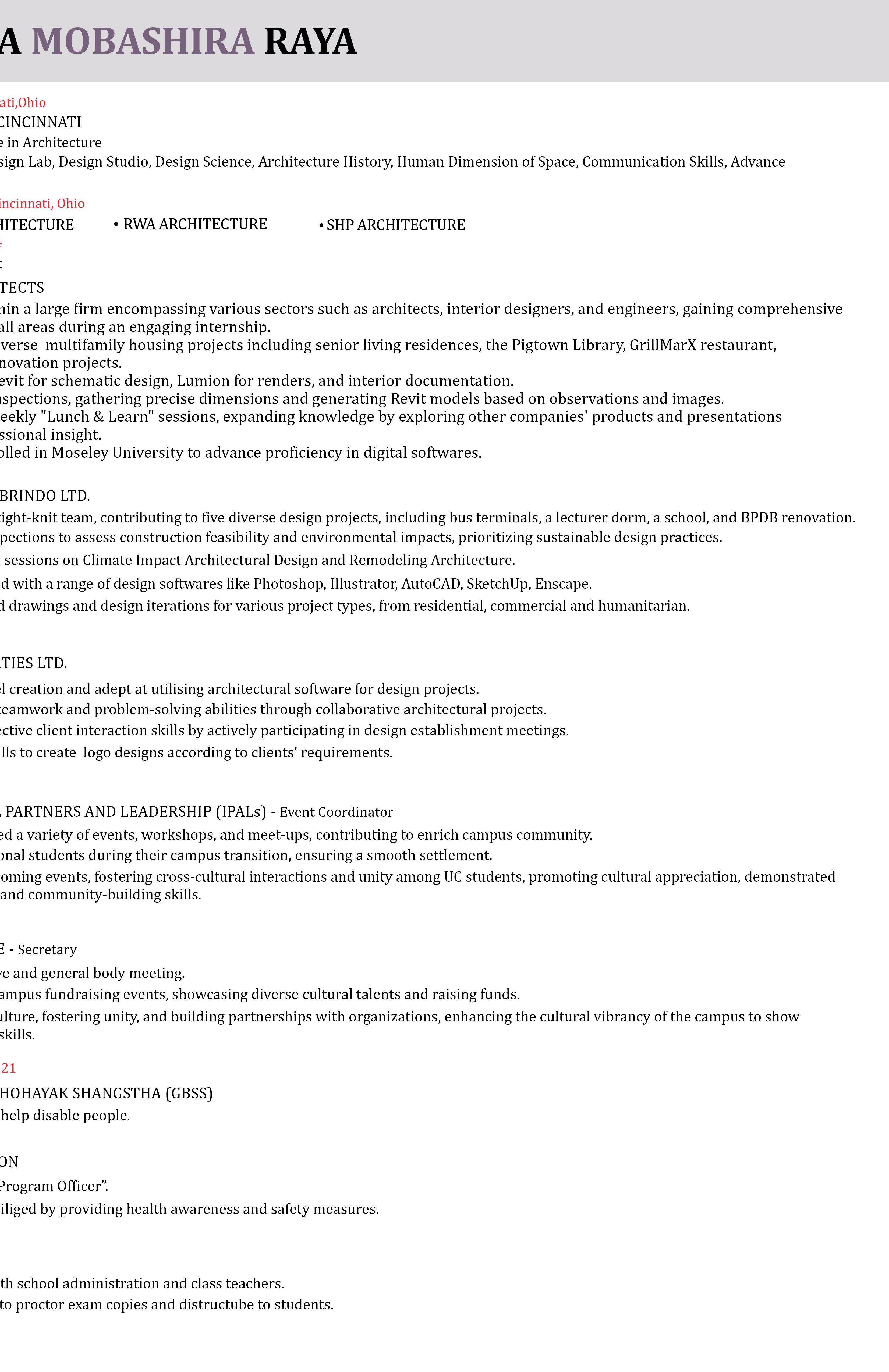


https://www.linkedin.com/ in/afsara-mobashira-raya-
https://issuu.com/afsararaya/docs/ raya_afsara_mobashira_portfolio_092923

https://www.instagram.com/afsara_raya_arch?igsh=MTdhN2xwMHF4NnhrdQ%3D%3D&utm_source=qr

3 4 5 6
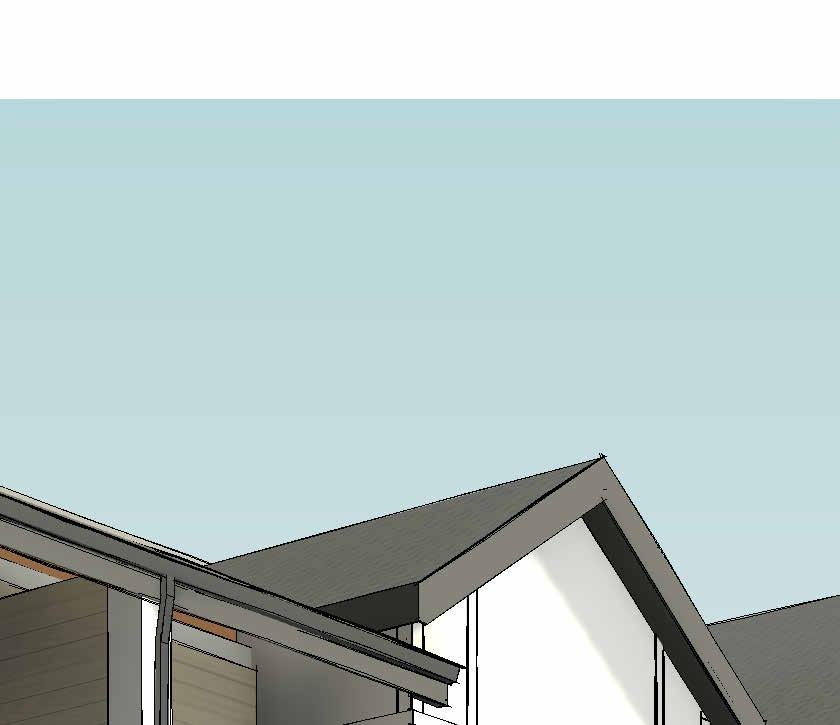
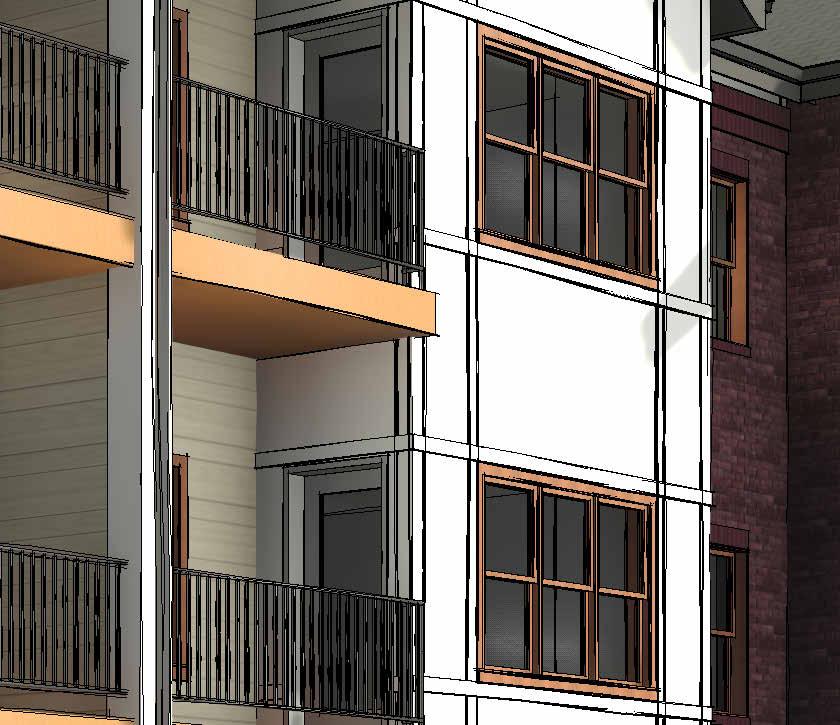

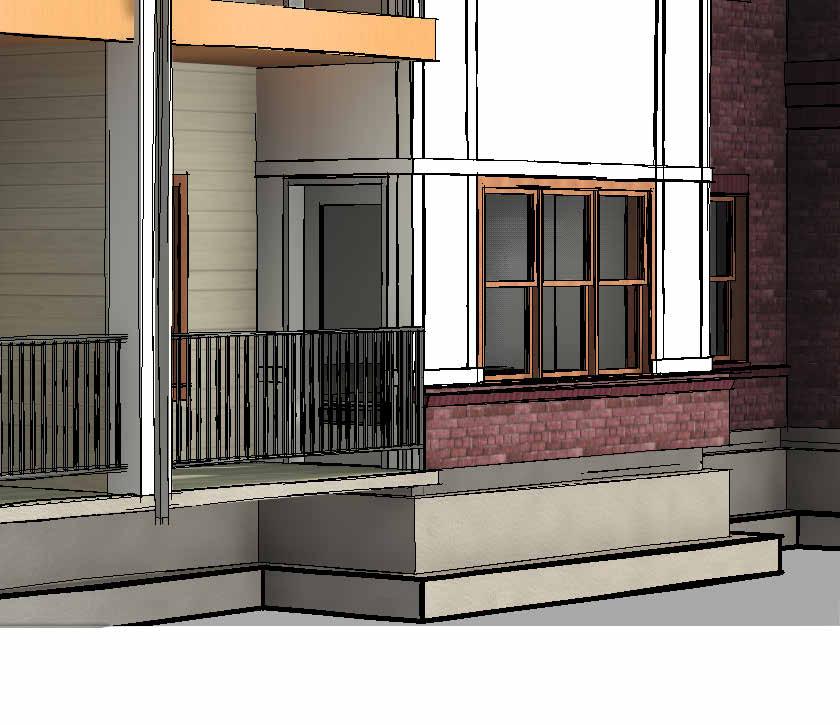




Page: 14-15
Page: 10-13
Page: 16-19
Page: 20-23
Page: 28-31
Page: 24-27





 Serenity
Serenity

Site Analysis: Strategically located on a 16-acre site near the Dhaka-Chattogram Highway, addressing urban connectivity needs.
Visualization Expertise: Proficiently used Enscape for realistic renderings, and AutoCAD for precise floor plans and diagrams.
Aesthetic Sensibility: Designed unique wavy pyramid-shaped roof over canopies. Strategic locations and site analysis, enhancing connectivity in transportation infrastructure.
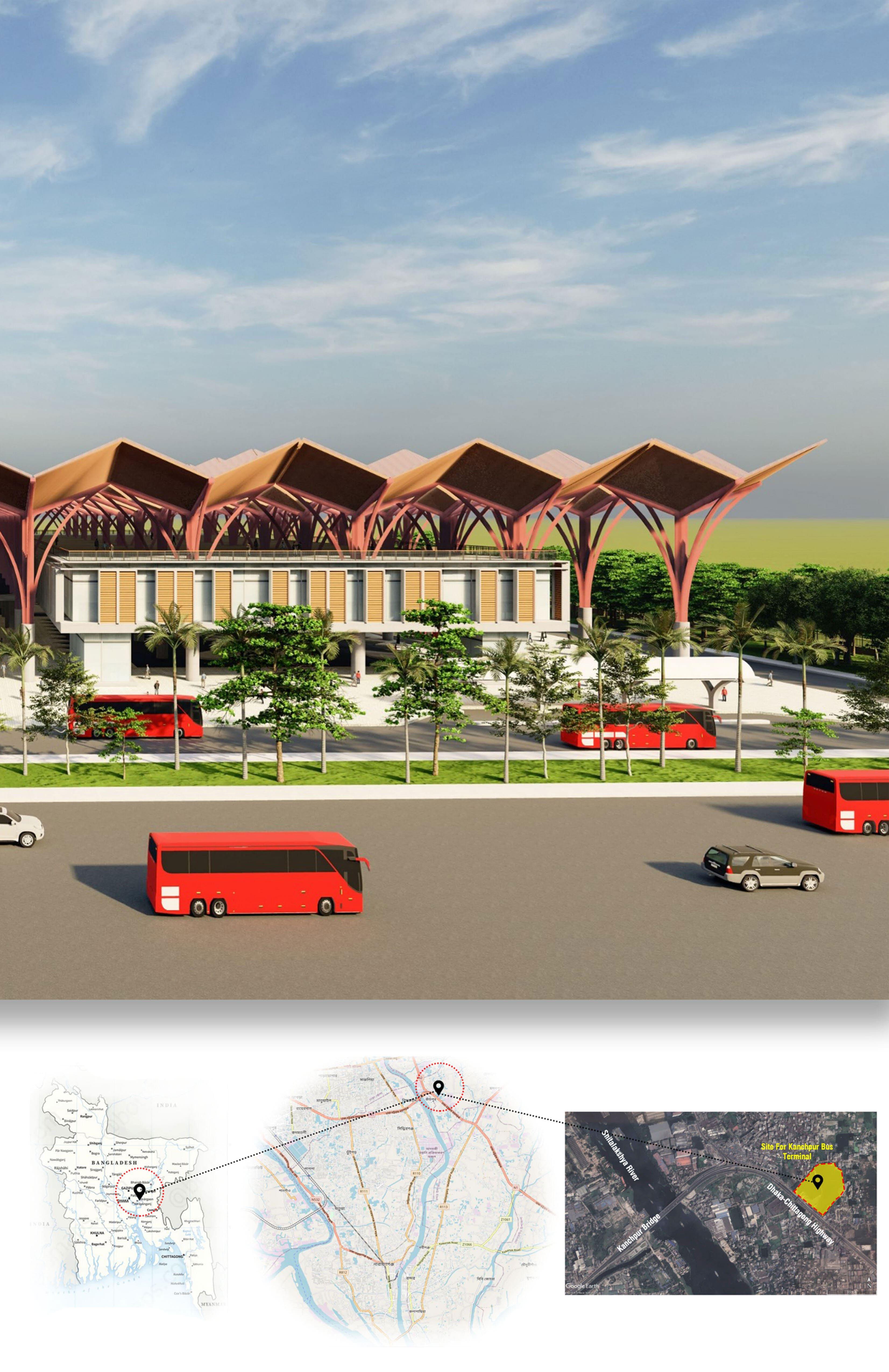

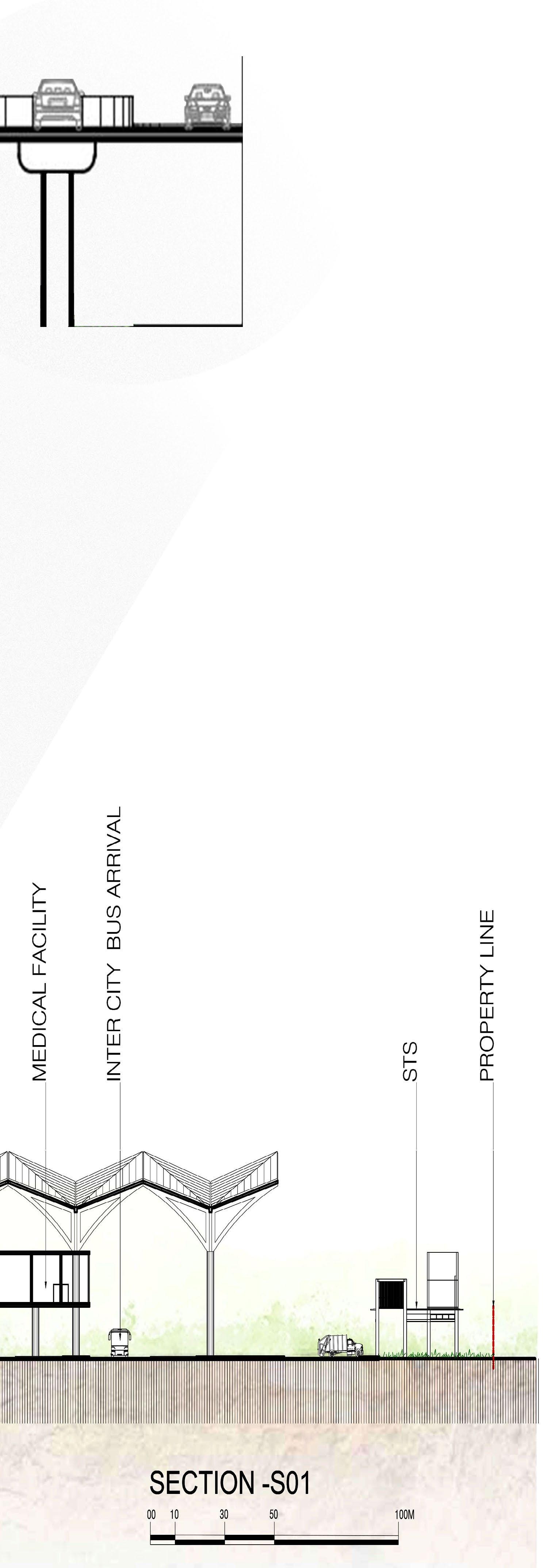
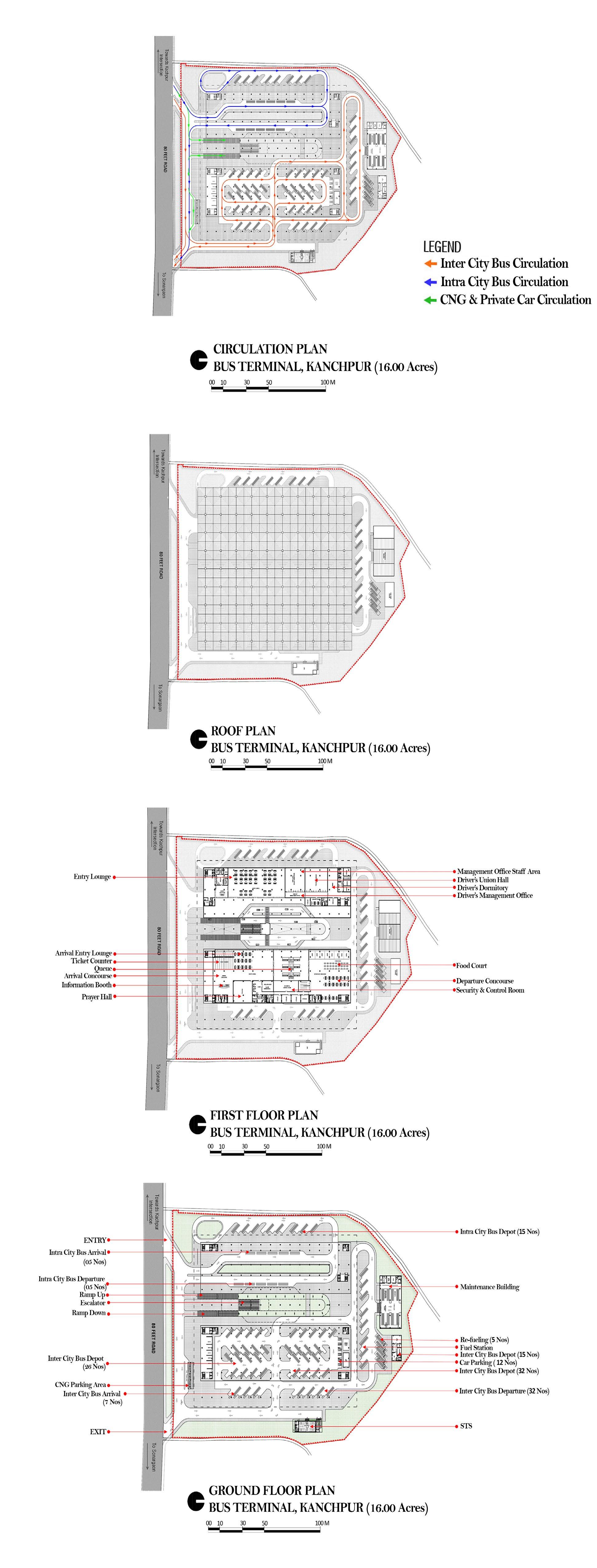
• Contributed to the schematic design of Carter Woods senior living apartments in VA, as part of the Moseley Architects team.
• Developed a better understanding of the site through site images, tagged of components and dimensioned the spaces.
• Used callouts to highlight kitchen and bathroom features in each unit, adding cabinets sanitary appliances in detailed elevations.
• I rendered revit perspective view in photoshop.



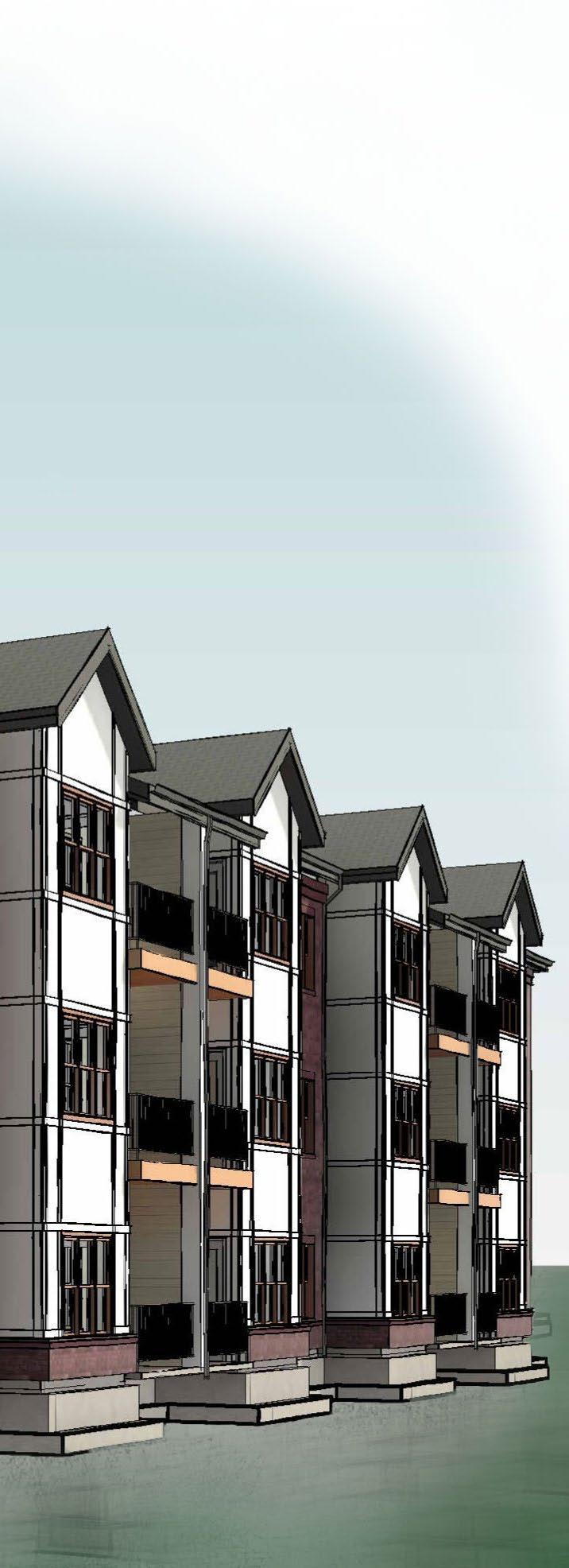
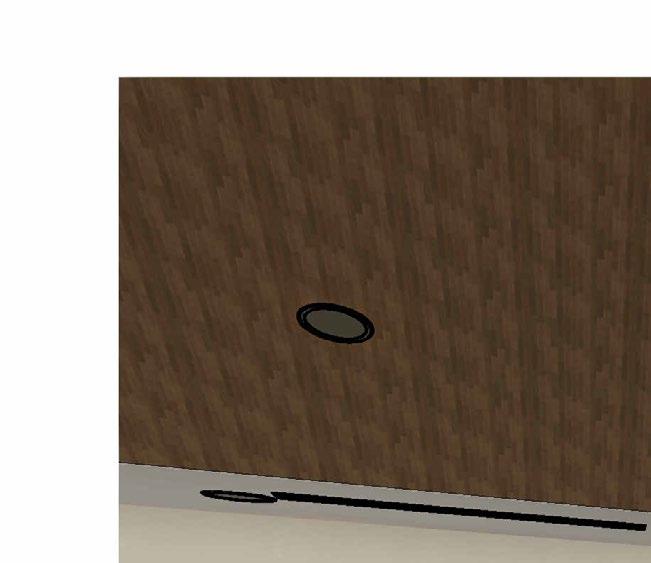

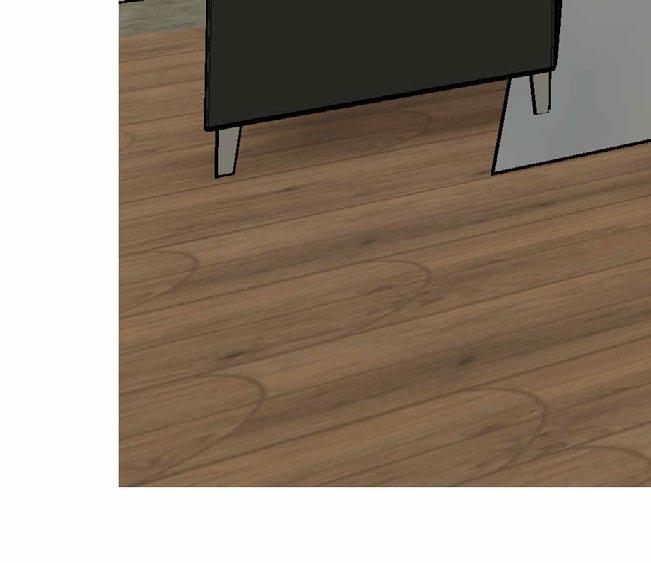


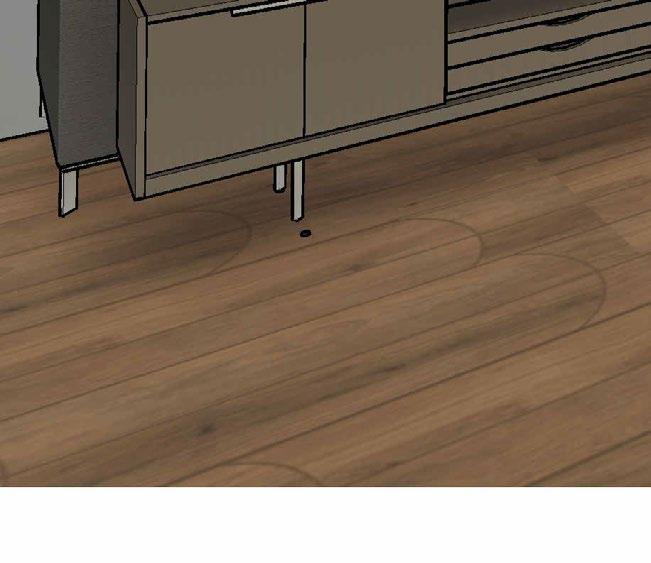




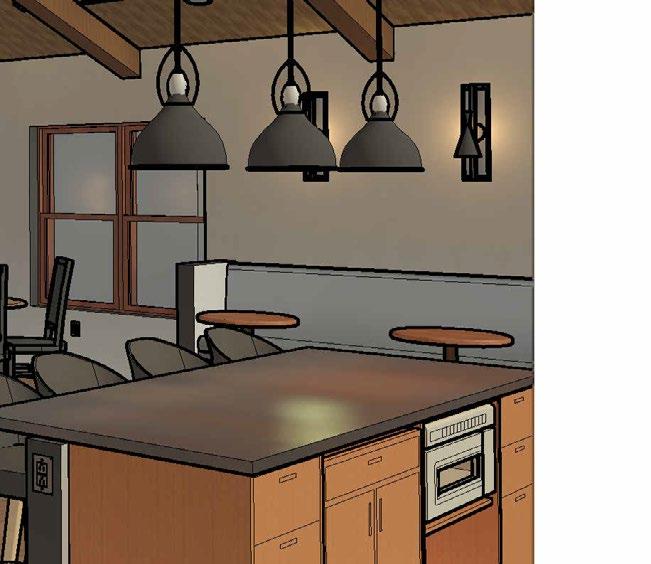

• Worked closely with the interior sector of the firm to select materials that matched the client’s preferences and reflected modern historic Richmond.
• The fitness room is located on the second floor, where we have opted for a cool brown tone complemented by contrasting wood vinyl flooring and carpet.
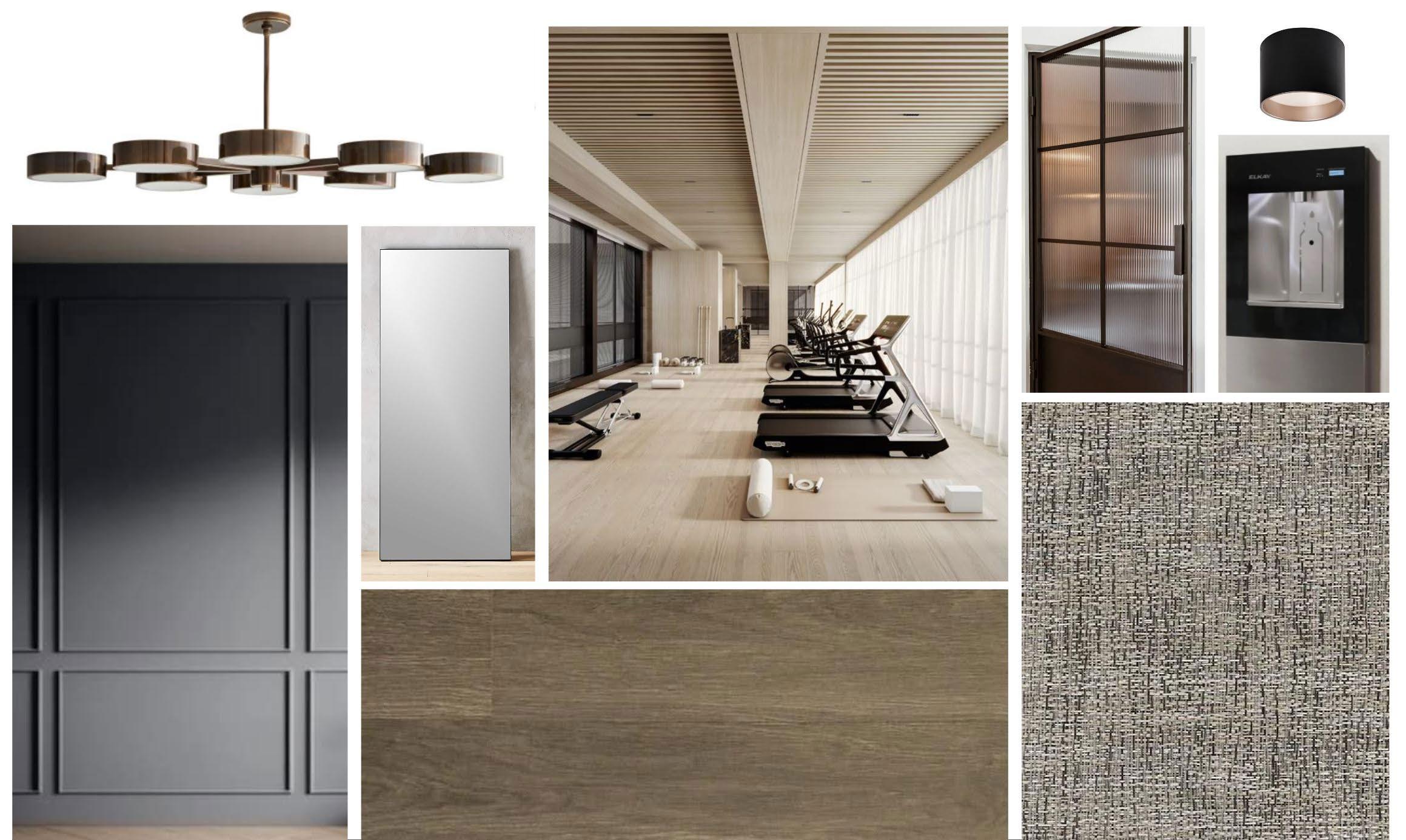

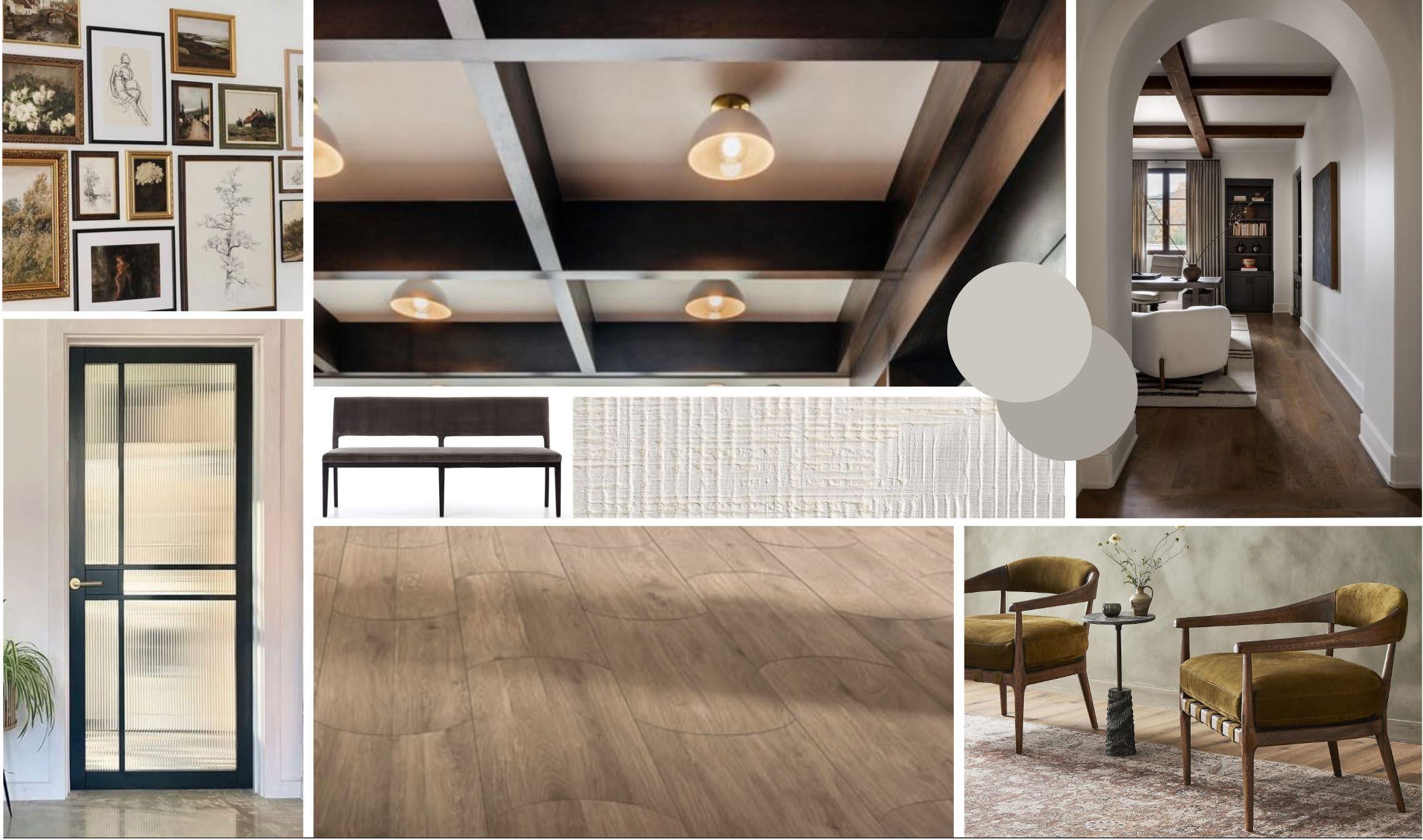
• Assisted in finding precedents for interior spaces to present to clients, contributing opinions and helping document the schedule of interior materials.

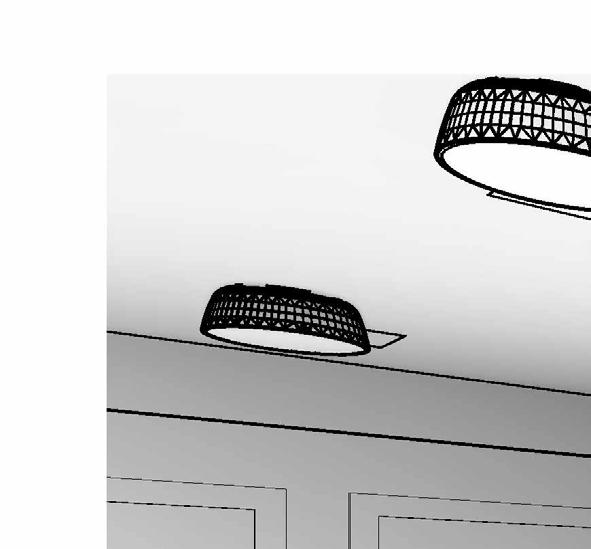

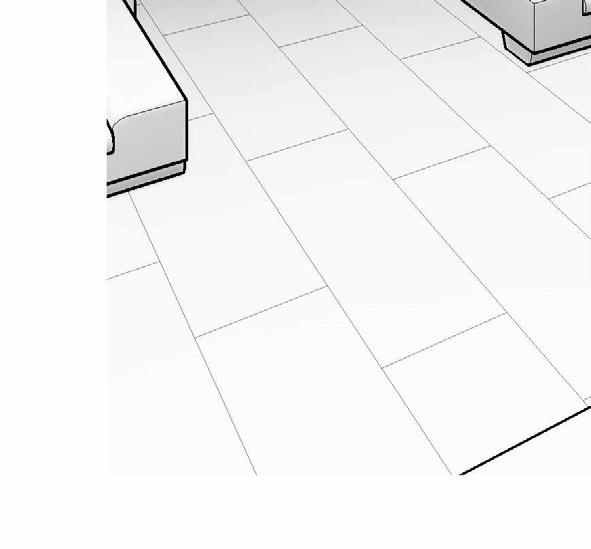


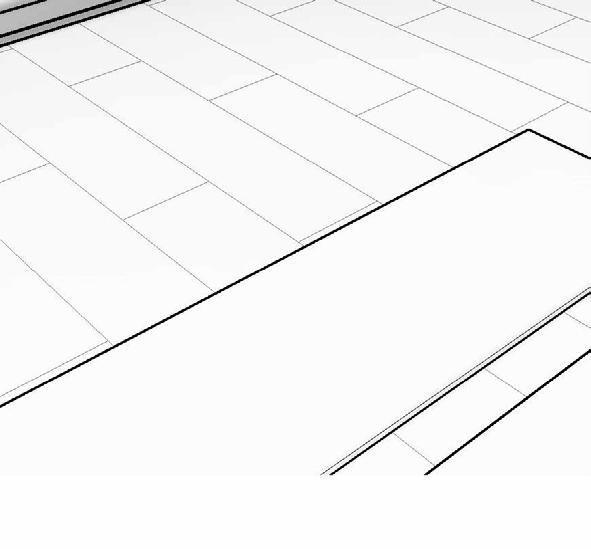
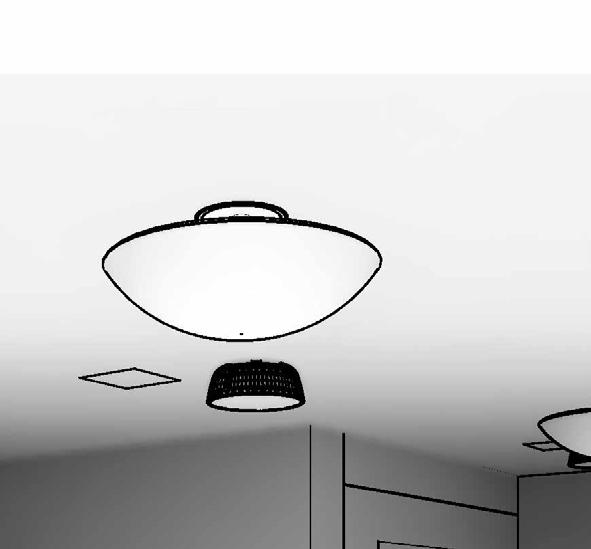

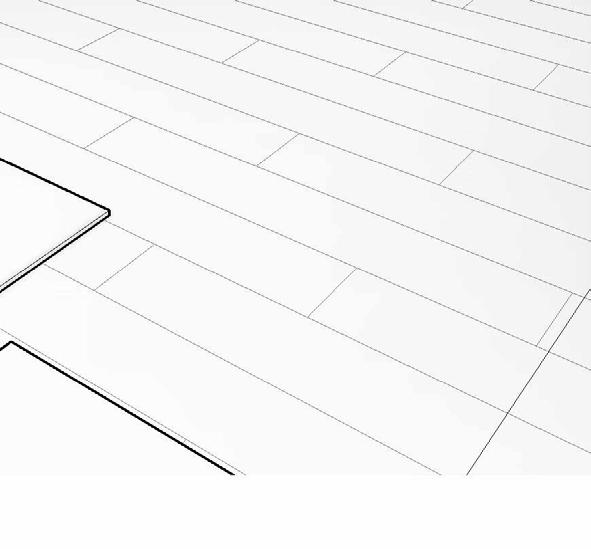

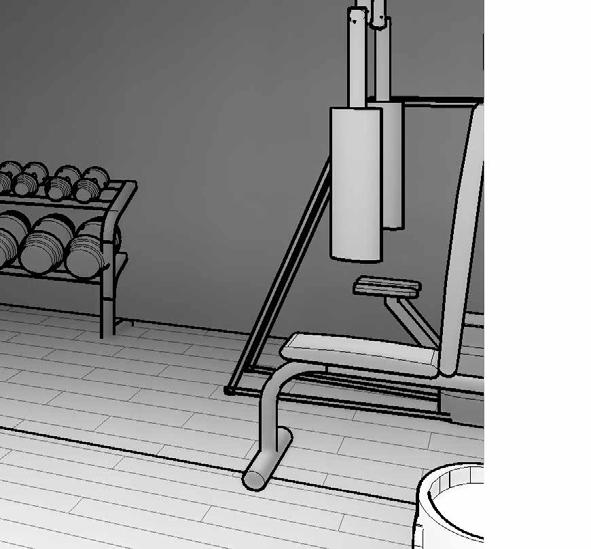
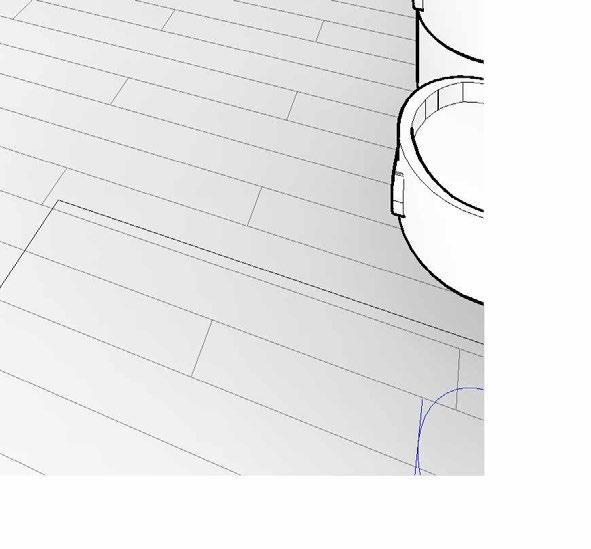
• Worked at Moseley Architects on the Forest Village Apartments project in Fredericksburg, VA, primarily focusing on schematic design.
• Organized the plan into five clusters (A-E), tagging components and dimensioning spaces for clarity.
• Created detailed elevation and section drawings for the project.
• Managed the switch from demolished to new construction phases, ensuring seamless integration.
• Used callouts to create detailed kitchen and bathroom plans and elevations for each unit.
• I specifically showed Cluster A’s new constructed plan, elvation, section and units.
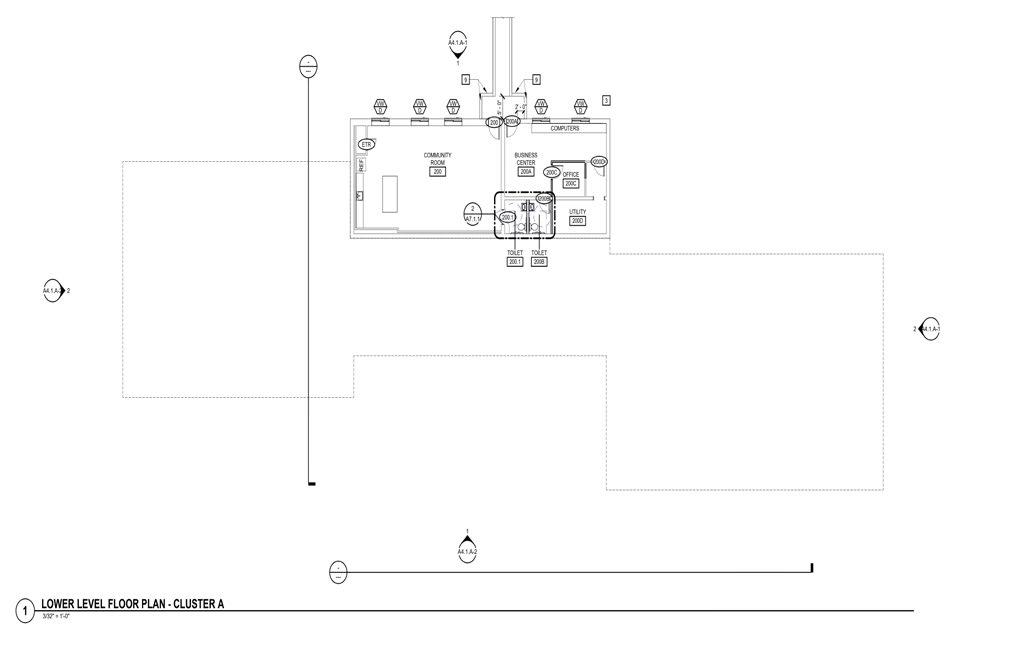


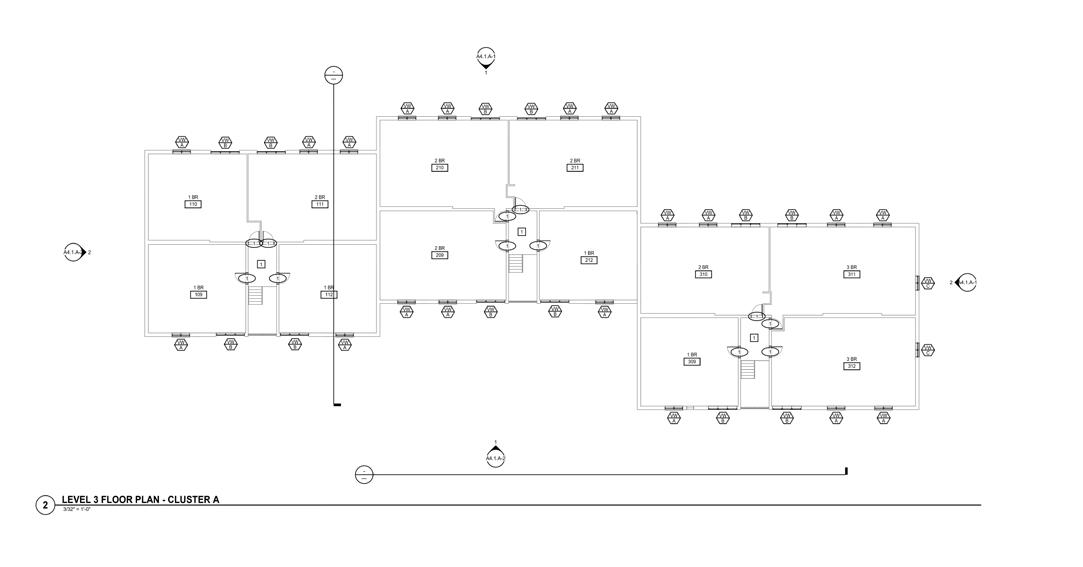
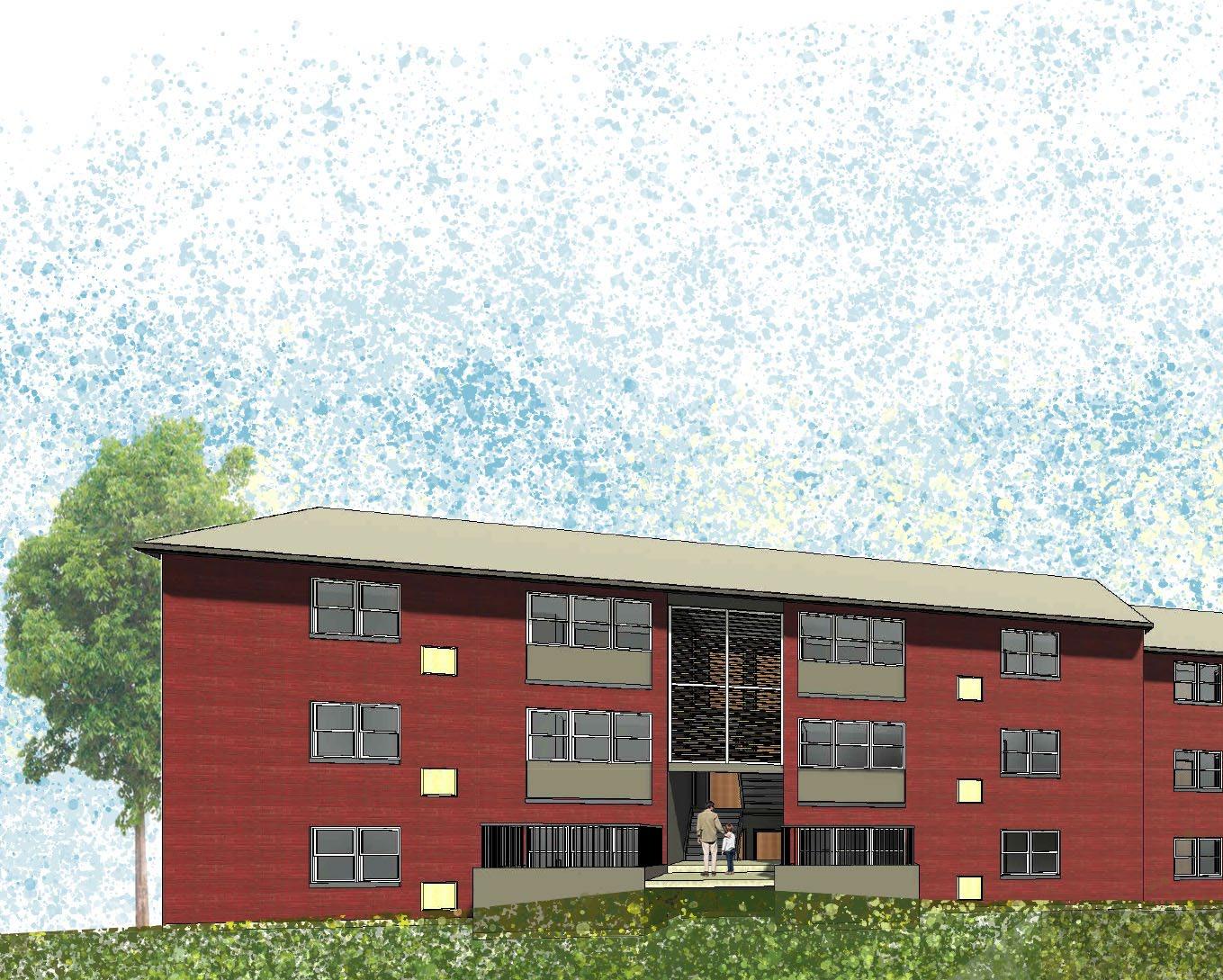



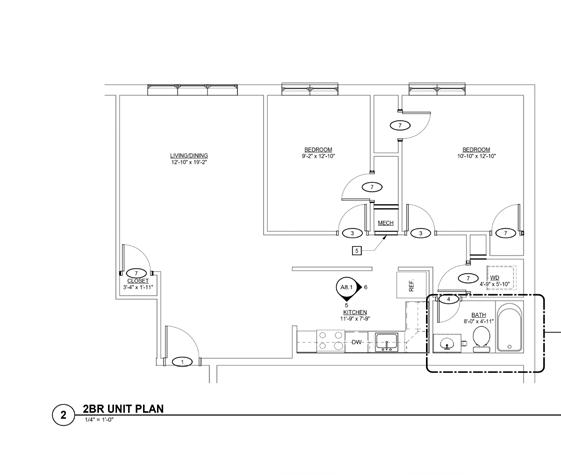

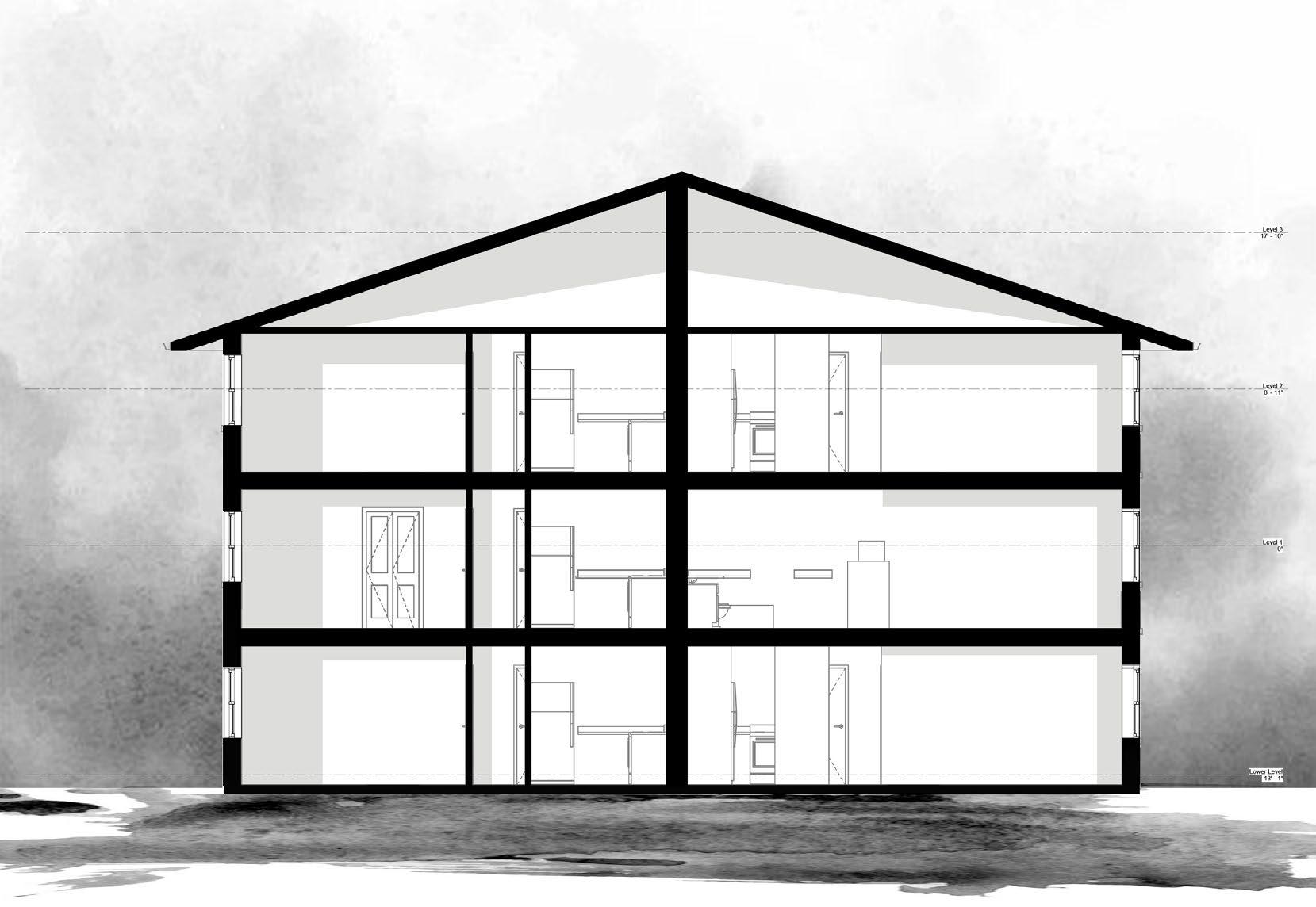


• The TriVista Center features two triangular buildings linked by a suspended bridge. One while the other houses private workspaces, blending functionality and aesthetics.
• The triangular design maximizes space utilization, offers structural stability, enhancing communal movement short-cut path in the middle of two building.
• Diagrams show surrounding vegetation, roads, and parking facilities.
• Section and plan drawings distinguish between private (stairwell, elevator, bathrooms, library, meeting rooms).
• Floor plan uses hatching to indicate different functional areas, with lighter colors for
• Section drawing illustrates light direction and access, with curtain wall facade combining
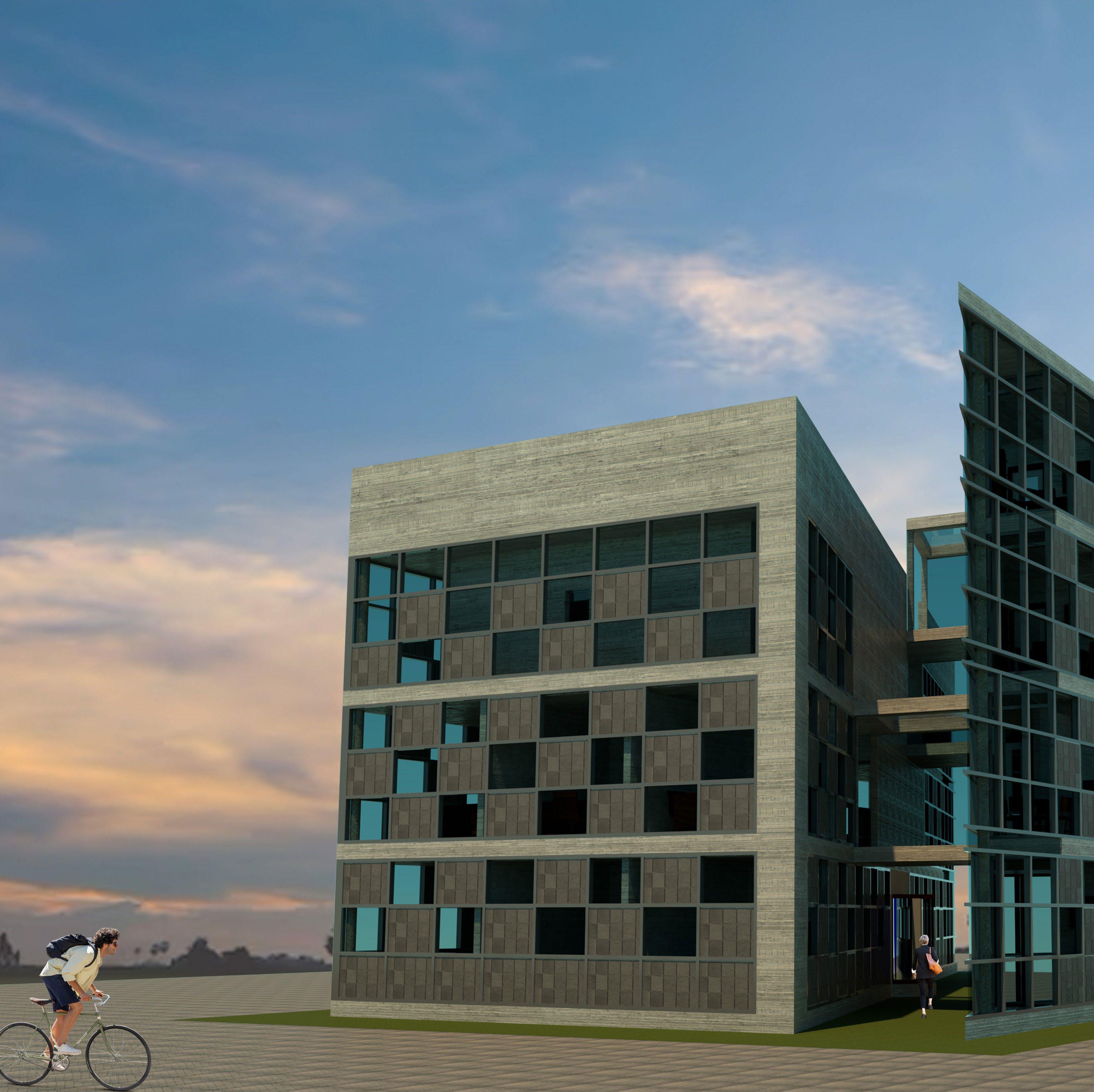
enhancing green space layout with sustainable bathrooms, offices) and public areas (hallways, hallways to highlight circulation spaces. combining solid and glass materials.


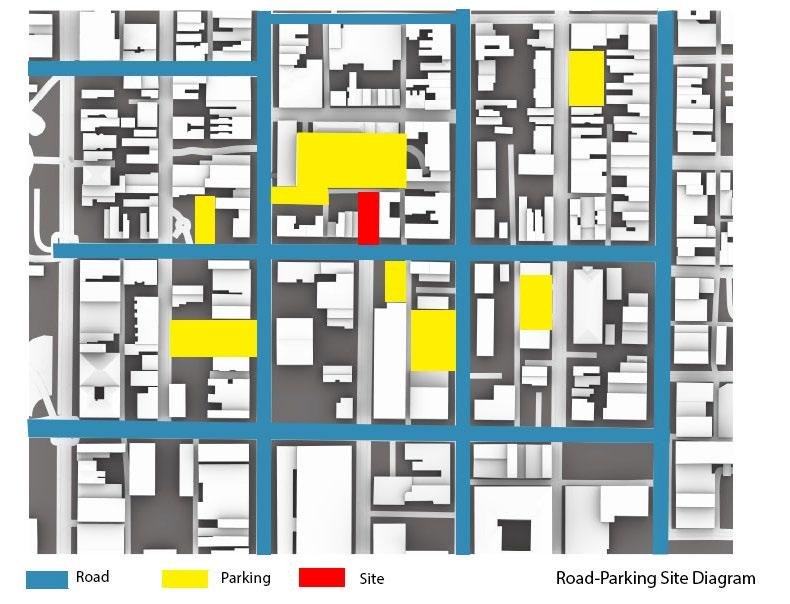
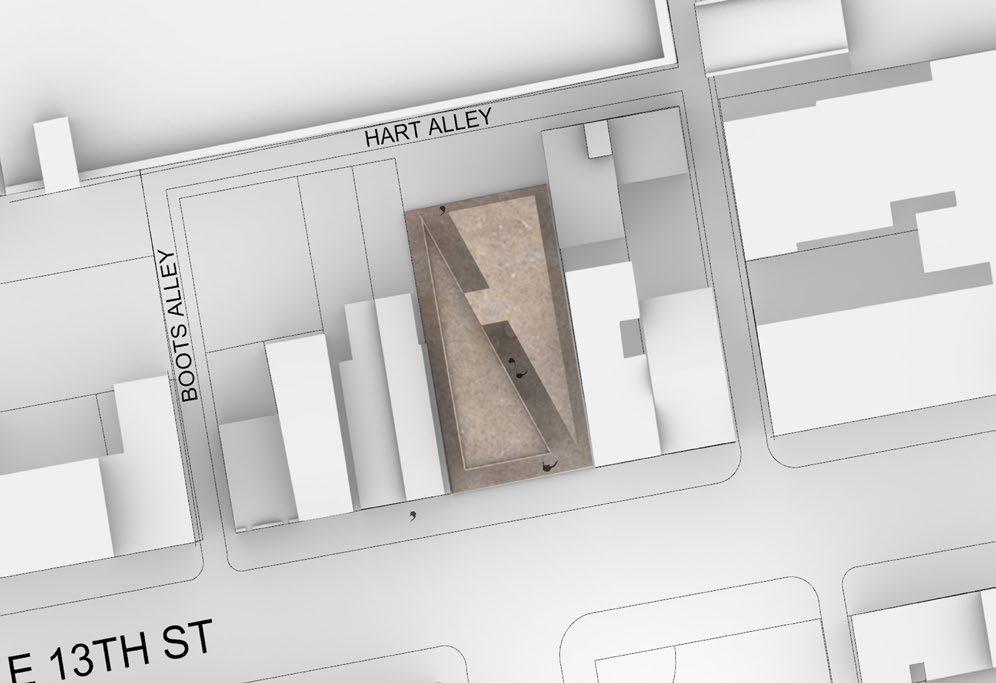


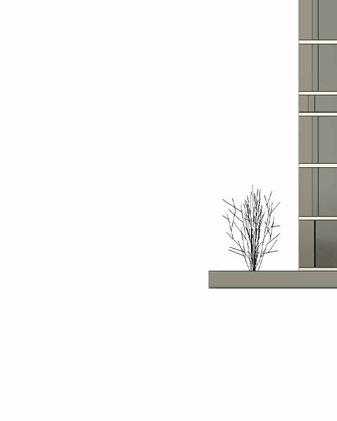





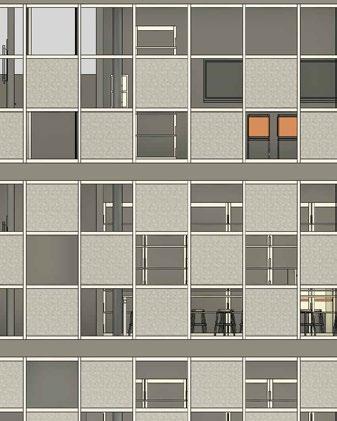


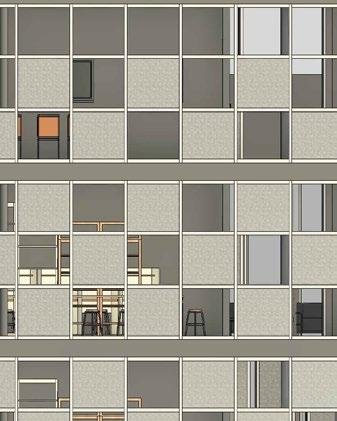



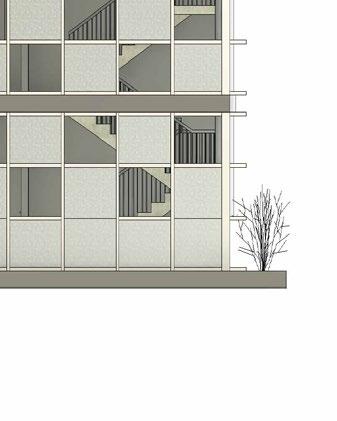










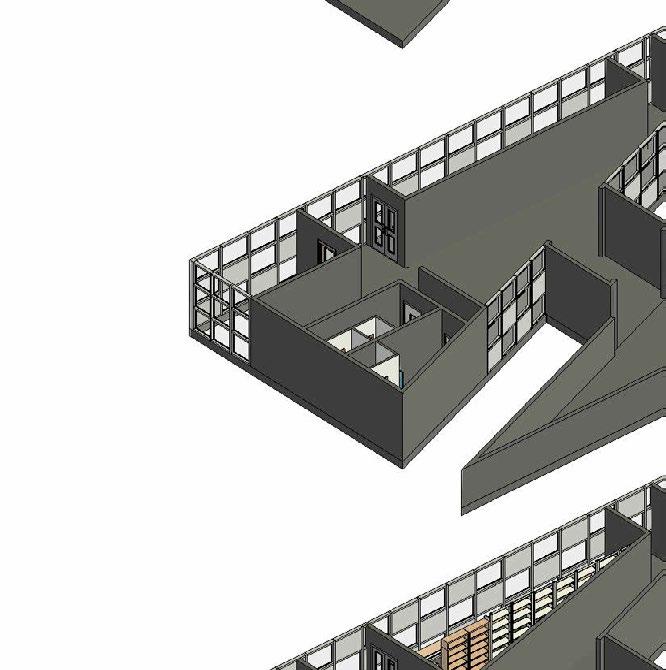

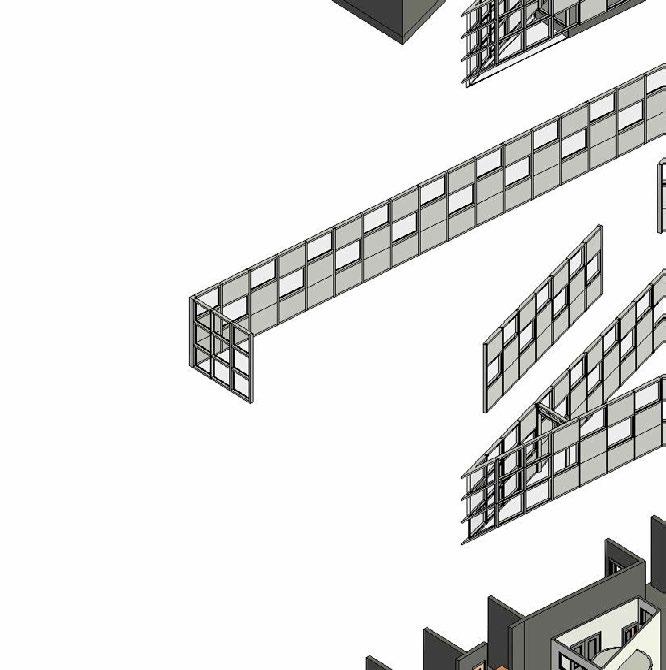
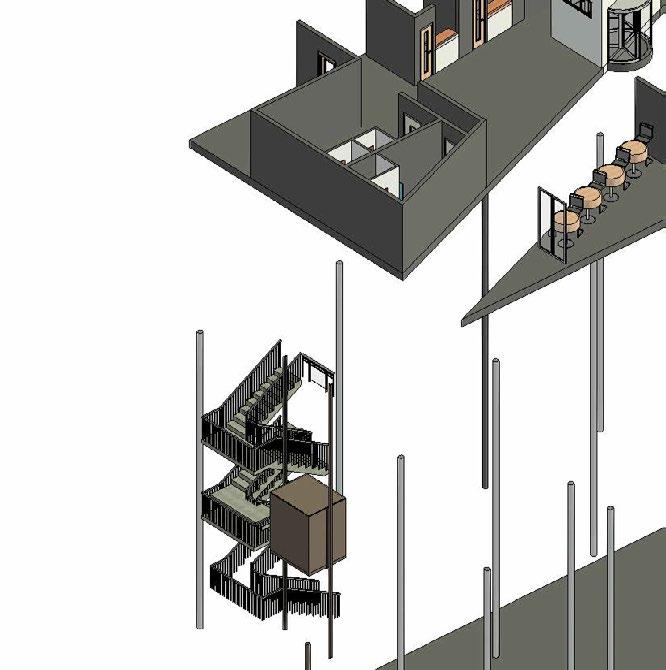


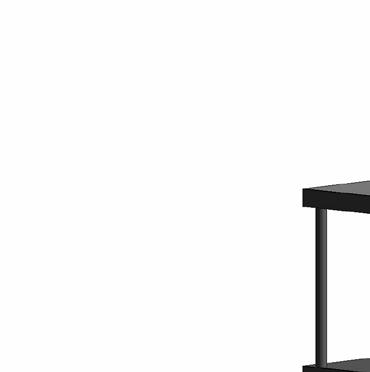

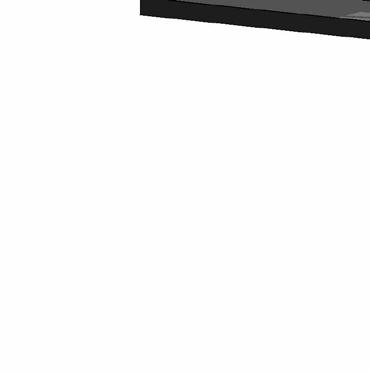
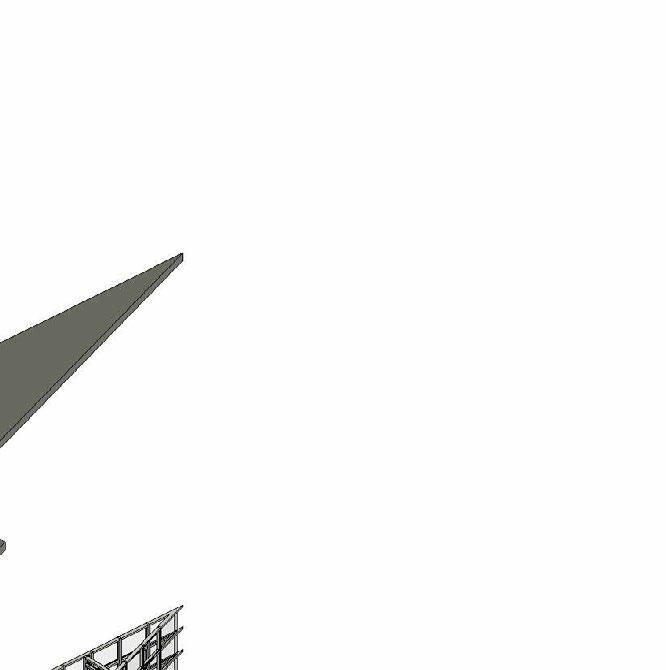
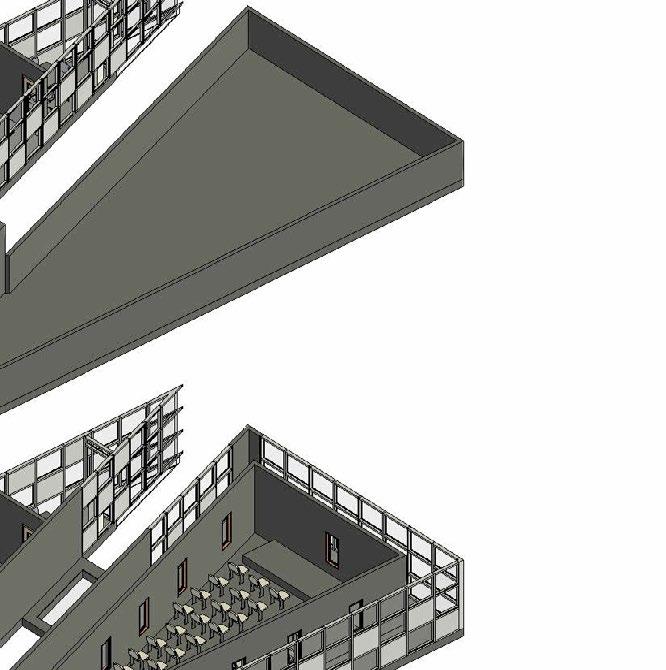
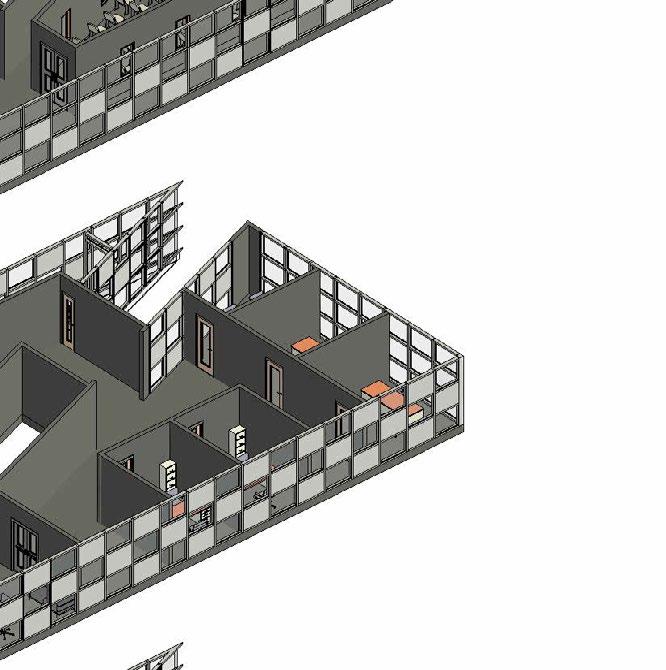
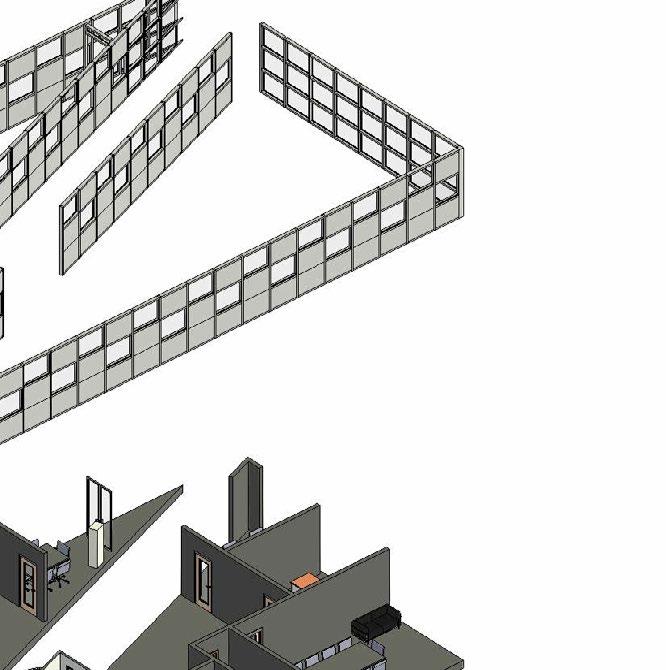
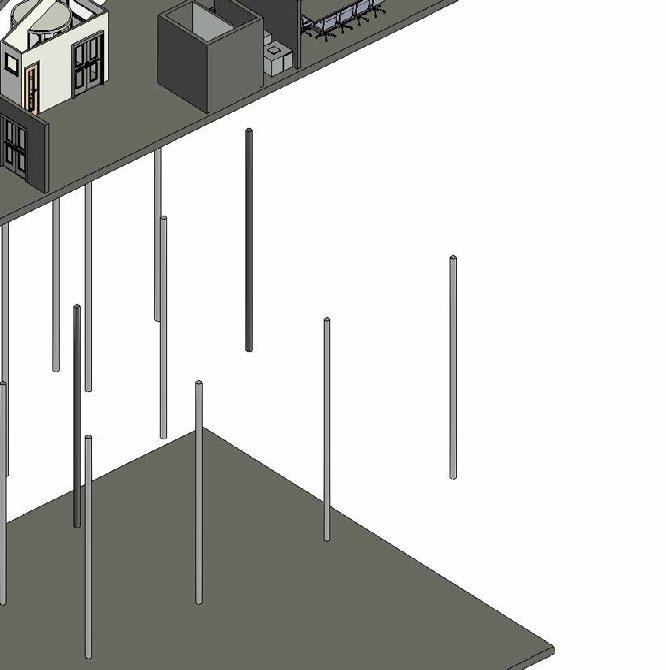

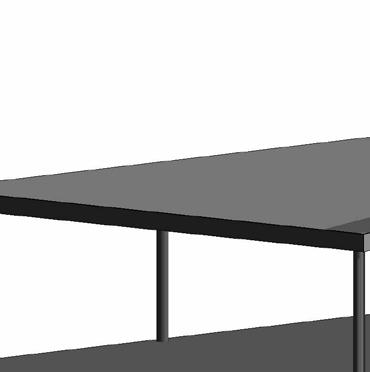











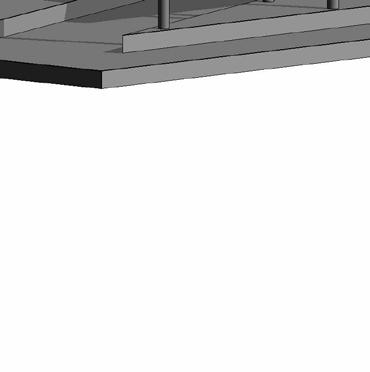

• Physical model has been created based on the site Cincinnati, OH.

• The exploded model illustrates the structure and highlighting the functional areas within the community

• The bridge between the second floor and third tivity between two buildings while providing privacy public exposure to private areas.

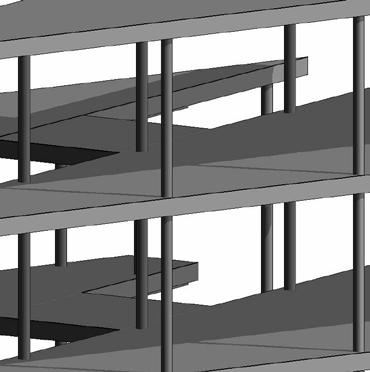
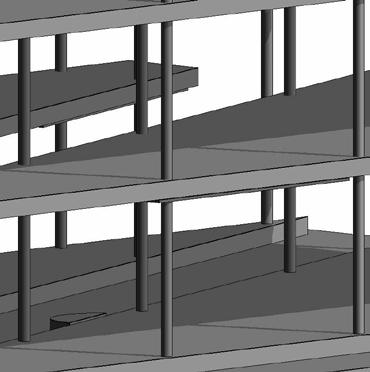
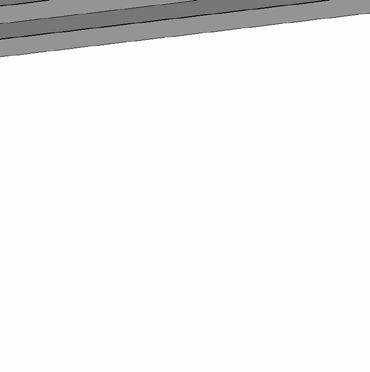
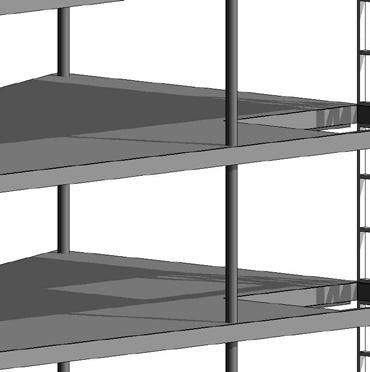


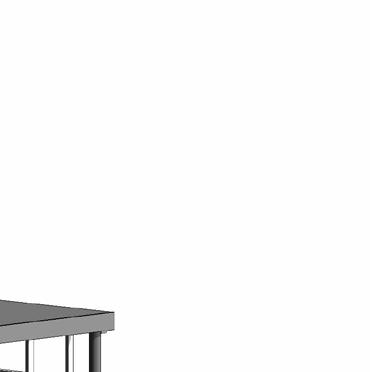
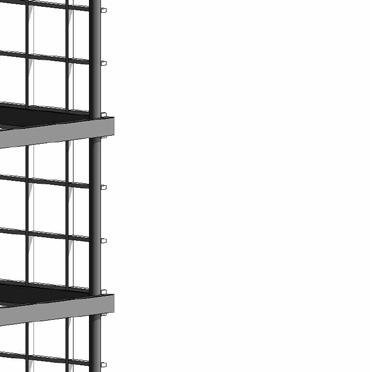
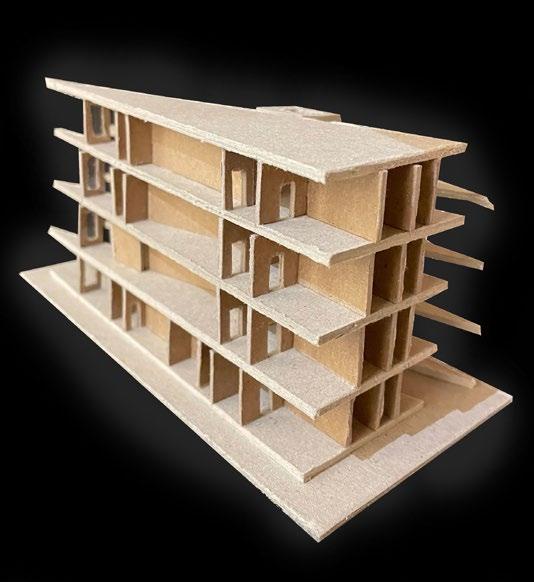
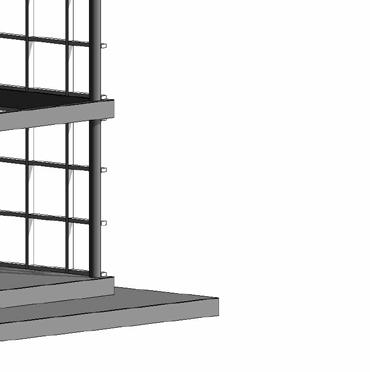


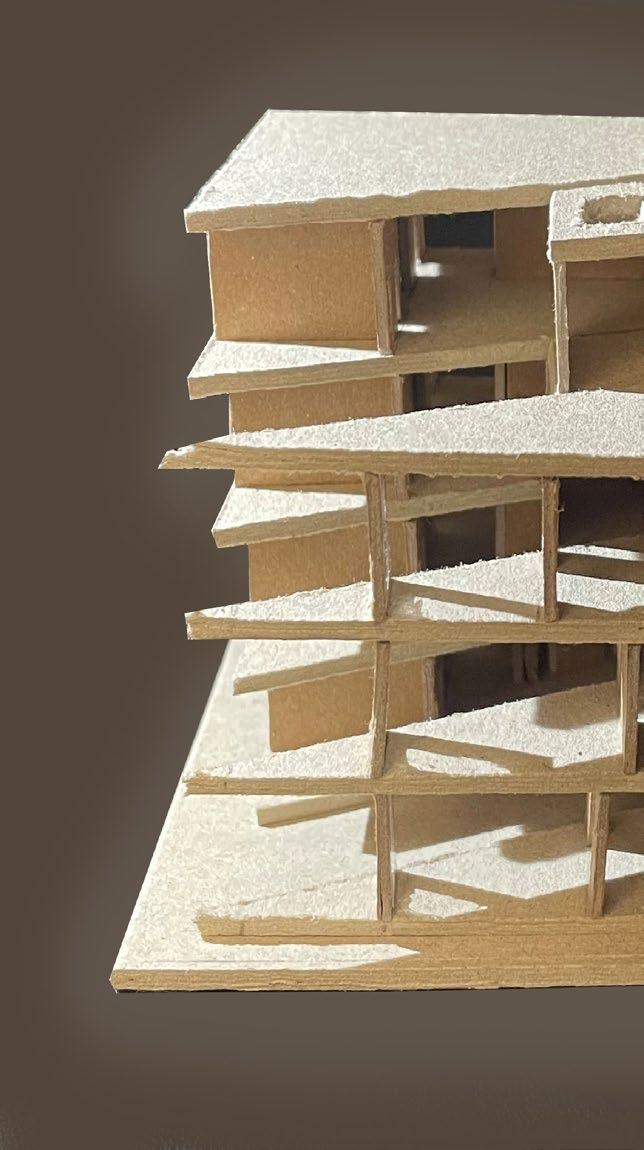

site scale in 22E 13th St, and facade construction, community center.
floor features connecprivacy from complete


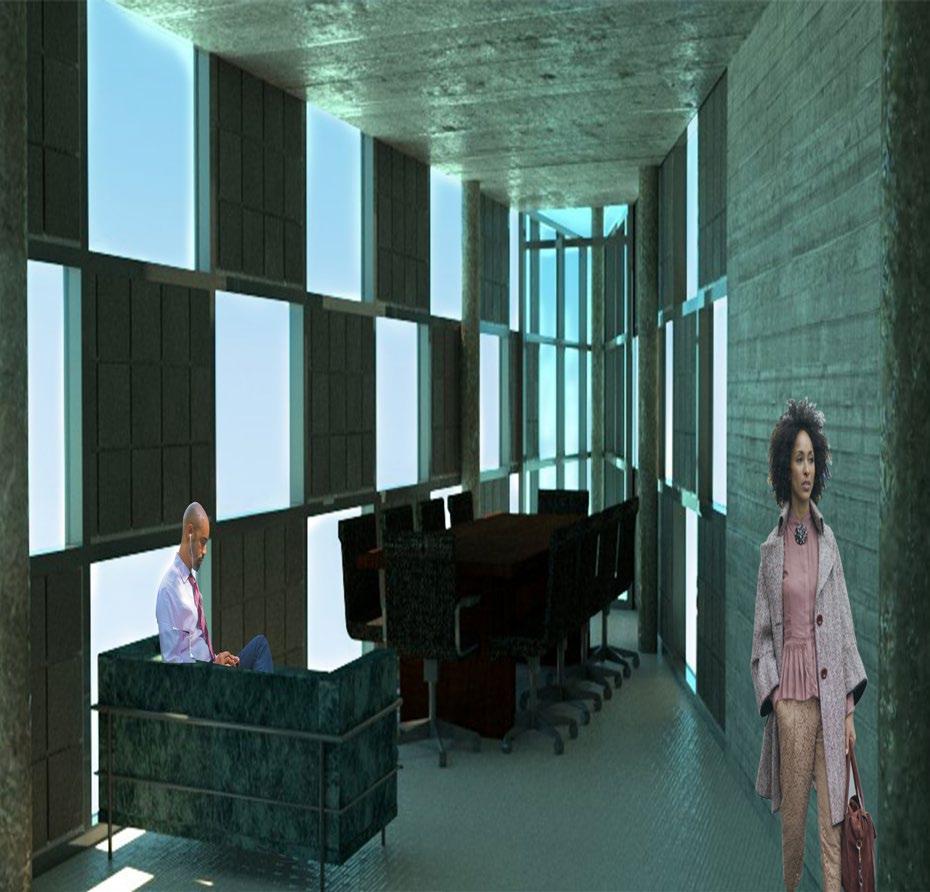


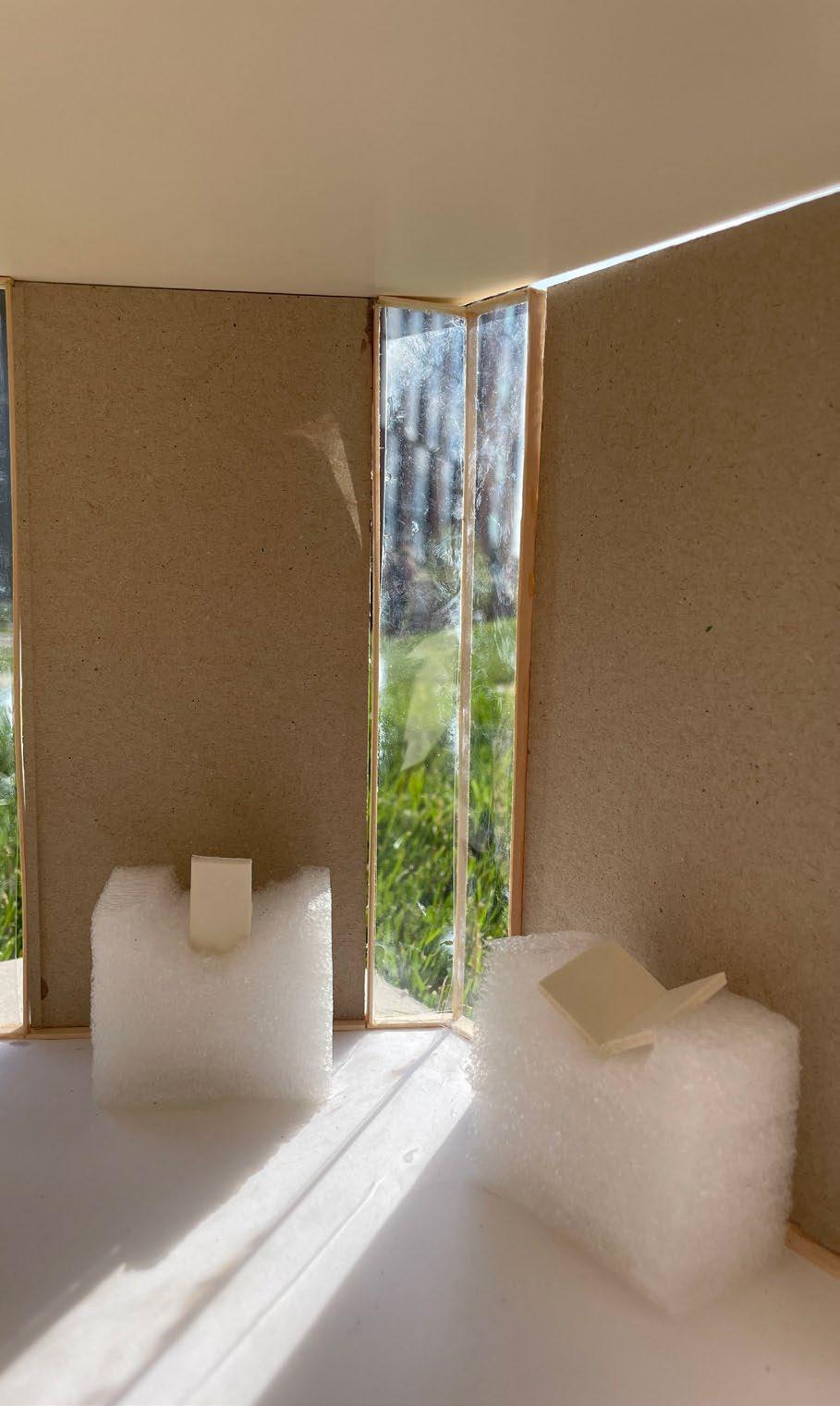


 Skyline
Trusses
Ceiling
1. Recording of Kathleen Battle as Treemonisha
2. Ruth Lyon’s Microphone with Flowers
Skyline
Trusses
Ceiling
1. Recording of Kathleen Battle as Treemonisha
2. Ruth Lyon’s Microphone with Flowers
• Utilized four hexagon layout for its stable shape and easy circulation, with a central atrium for visitors to overview the space and a skylight for natural light access.
• Designed unique access and vitrine for each of the 7 iconic artifacts, ensuring each piece’s significance is highlighted within the space.
• Incorporated corner full-length windows for natural lighting, with diffuse light sources around trusses to enhance the ambiance.
• Specialized Displays:
• Open book-shaped vitrine for books.
• Hanging wall vitrine for the rifle.
• 120-inch LED flexible screen with soundproof acoustic panels for “Treemonisha” display.
• Sitting space with headphones for Doris Day’s recordings.
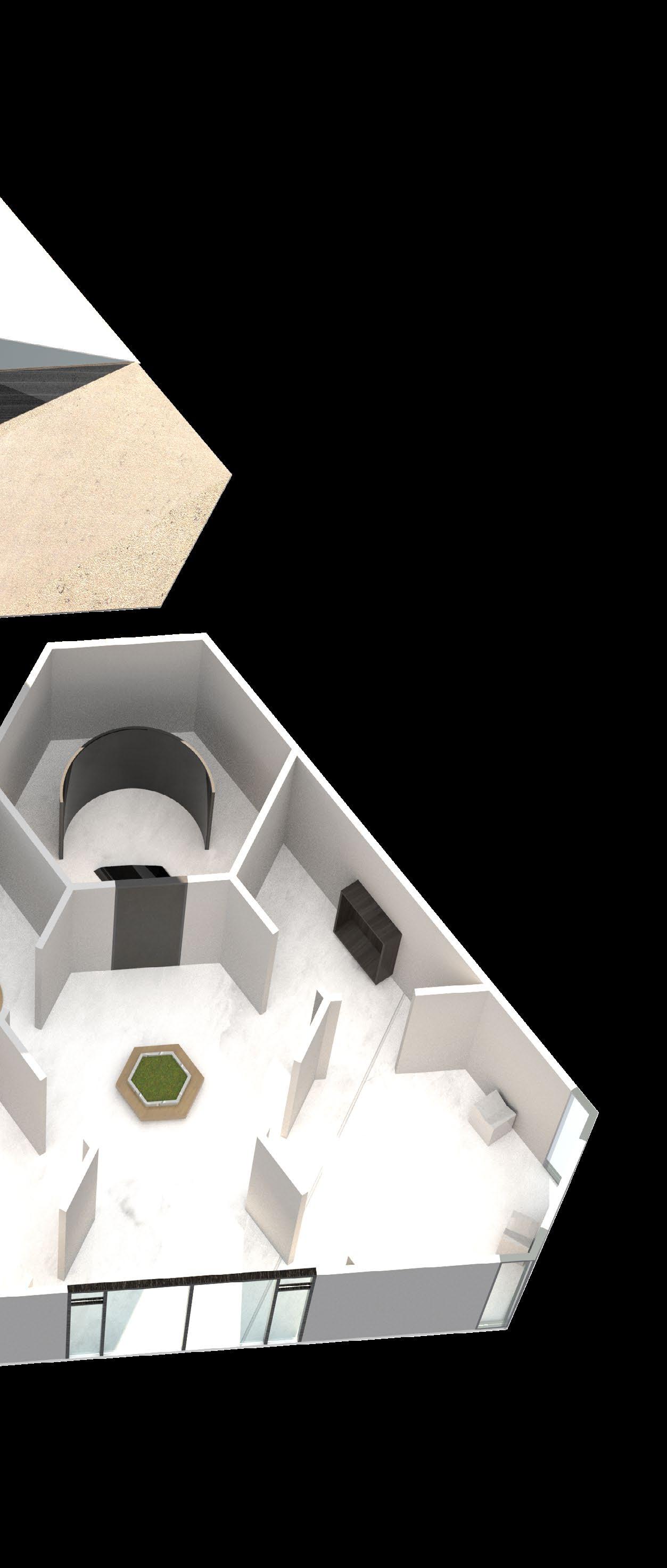
• Ensured easy movement between rooms except the soundproof opera room, creating a versatile exhibition environment.
• Used a vibrant color palette to create a contrasting and sophisticated exhibition space concept.
4. Annie Oakley’s Rifles 5. a) First Edition of American Woman’s Home b) Mrs. Trollope’s Calling Card c) First Edition of The Joy of Cooking Atrium Entrance
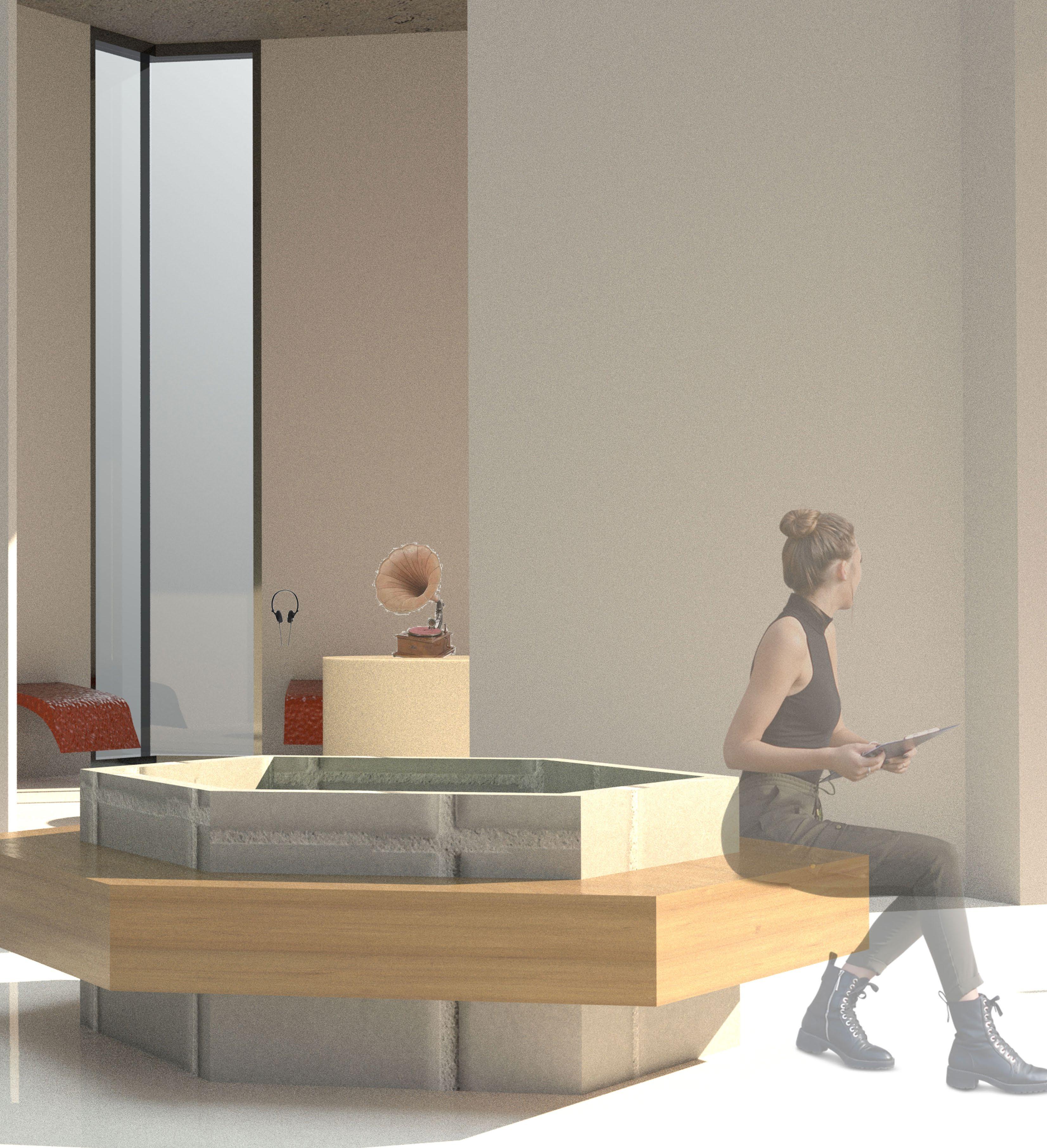
Brick study is done in SKETCHUP. A particular brick unit together creates aesthetic, functional design to replace window for ventilation system.


• 3D model created in SketchUp illustrating the structural elements and accessible pathways.
• Emphasis on creating an educational space focused on processes over products.
• Utilized natural, sustainable, and cost-effective materials like mud, wood, and bricks.
• Innovative brick design for natural light and ventilation, reducing the need for glass or windows.
• Detailed analysis of brick design for varying light patterns based on time and weather conditions.
• An inclusive and environmentally conscious educational space for long term.



VEGETATION DIAGRAM SUN PATH & WIND DIRECTION DIAGRAM SWEPT PATH DIAGRAM

Diagrams and Modeling:
• Diagrams illustrate surrounding vegetation, wind flow, and sun path to showcase the natural influence on the pavilion.
• Diagrams also depict vehicular and pedestrian movement within the site.
• The Rhino model demonstrates the intricate interplay of light within the pavilion.
• Thorough consideration of materials, lighting, and circulation.
• Thoughtful integration of natural elements into the pavilion’s design.
Site Description:
• Site was chosen in Burnet Woods, Cincinnati, Ohio, for its accessibility and park-like setting.
• Natural landscape features gentle hills, enhancing the sense of descending into the pavilion’s stage area.
Project Overview:
• Physical model constructed with burnished basswoods for four stepped levels.
• Pavilion design features wooden walls, glass seating, solid concrete facade, and a ceiling.
• Transparent seating provides a serene floating sensation during meditation.
• The playful interplay of light and shadow provides a peaceful ambience because horizontal and vertical wooden beams let natural light into the space.
• Three supporting columns bear the weight of two upper frames.
• Solid ceiling provides shade and protection from harsh weather.
• Private meditation area offers seclusion and a maze-like experience.
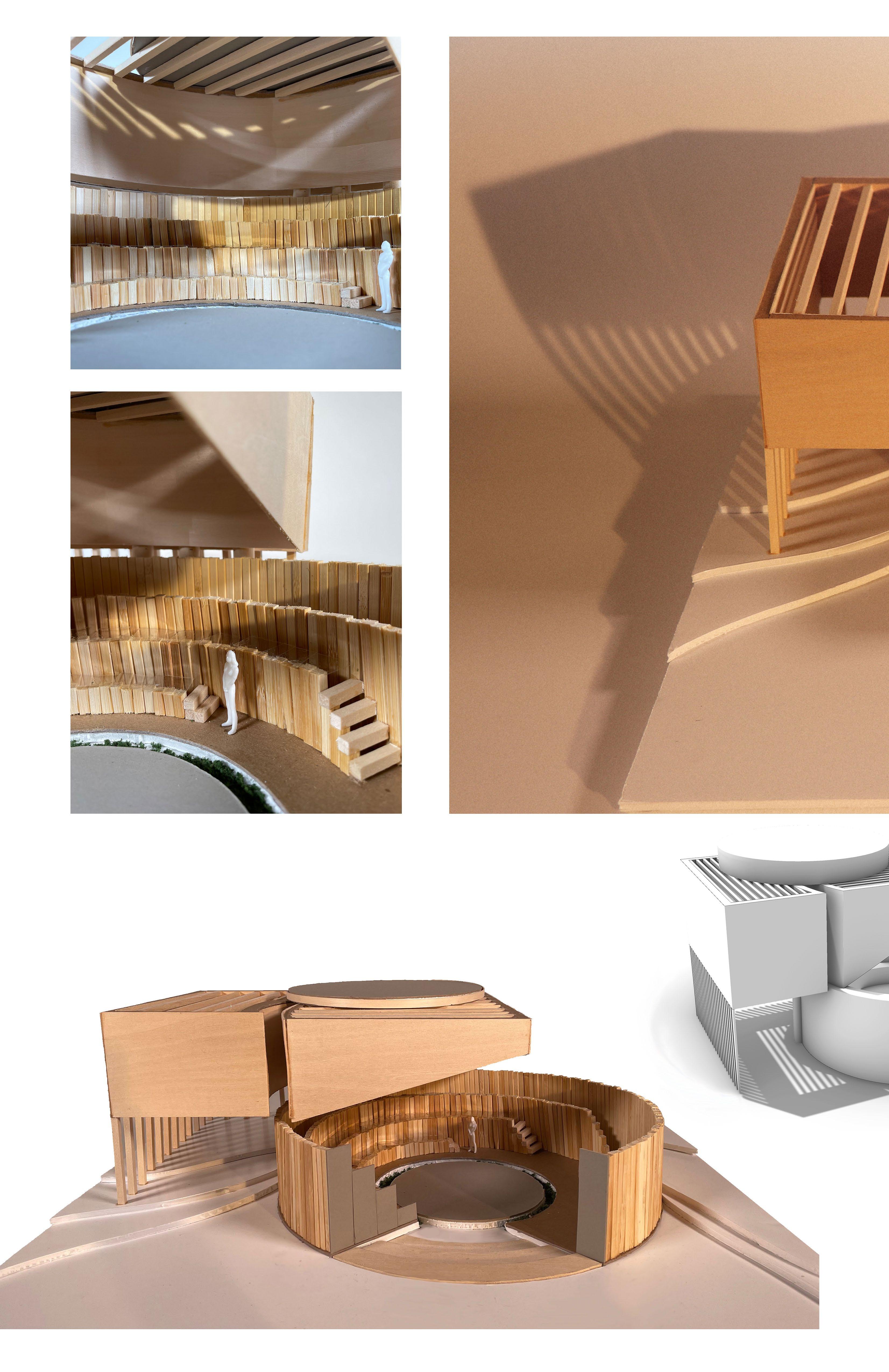

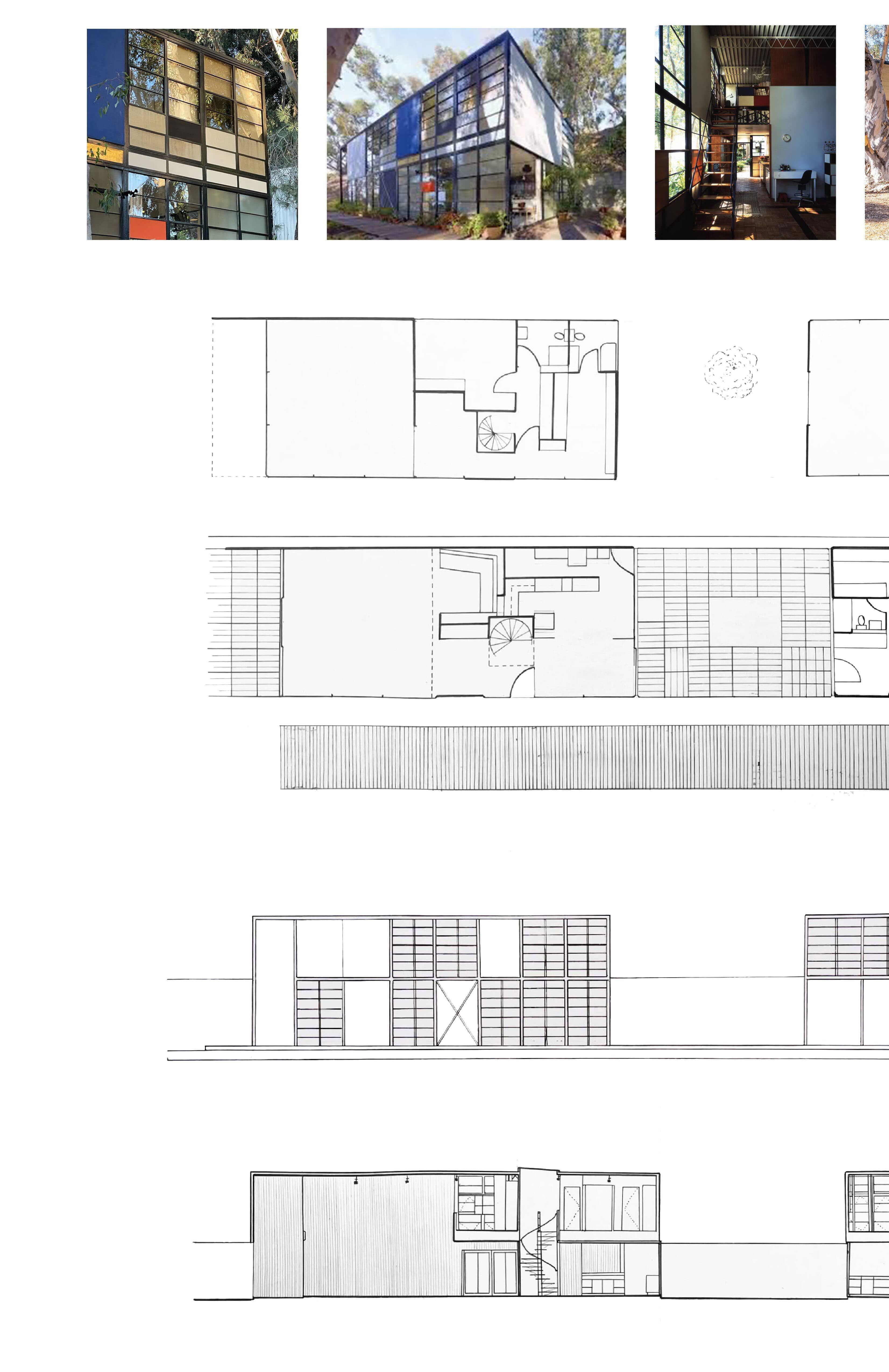

Project Overview:
• In-depth analysis of case study Building 8, focusing on internal spaces and façade design.
• Hand-drawn architectural plan, section, and elevation.
Design Features:
• Interior and facade analysis, with a particular emphasis on the De Stijl movement’s colour principles.
• Diagrams highlighting three distinct areas with unique conceptual meanings.
• Showcased the ability to extract and visualise unique meanings within architectural spaces.
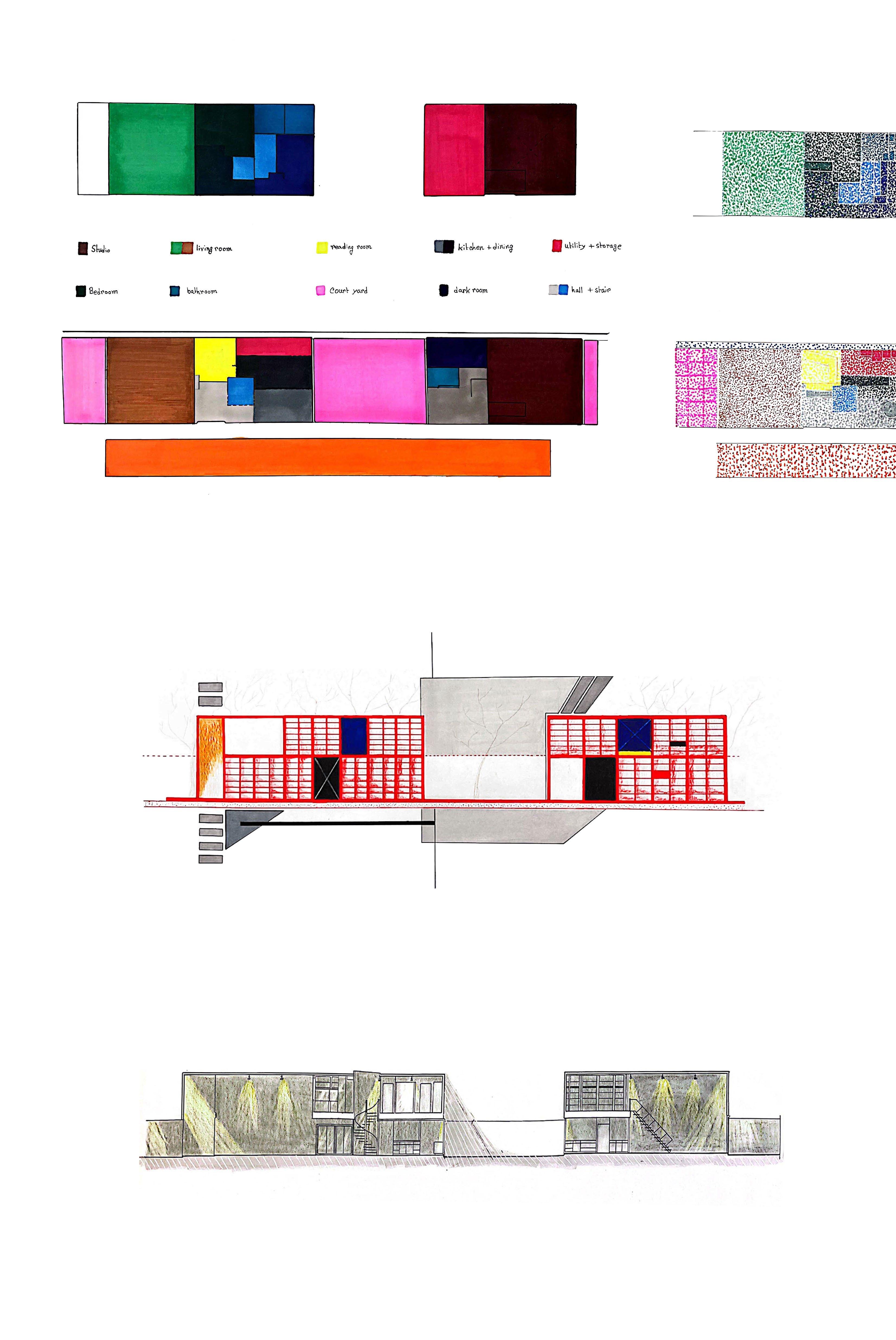
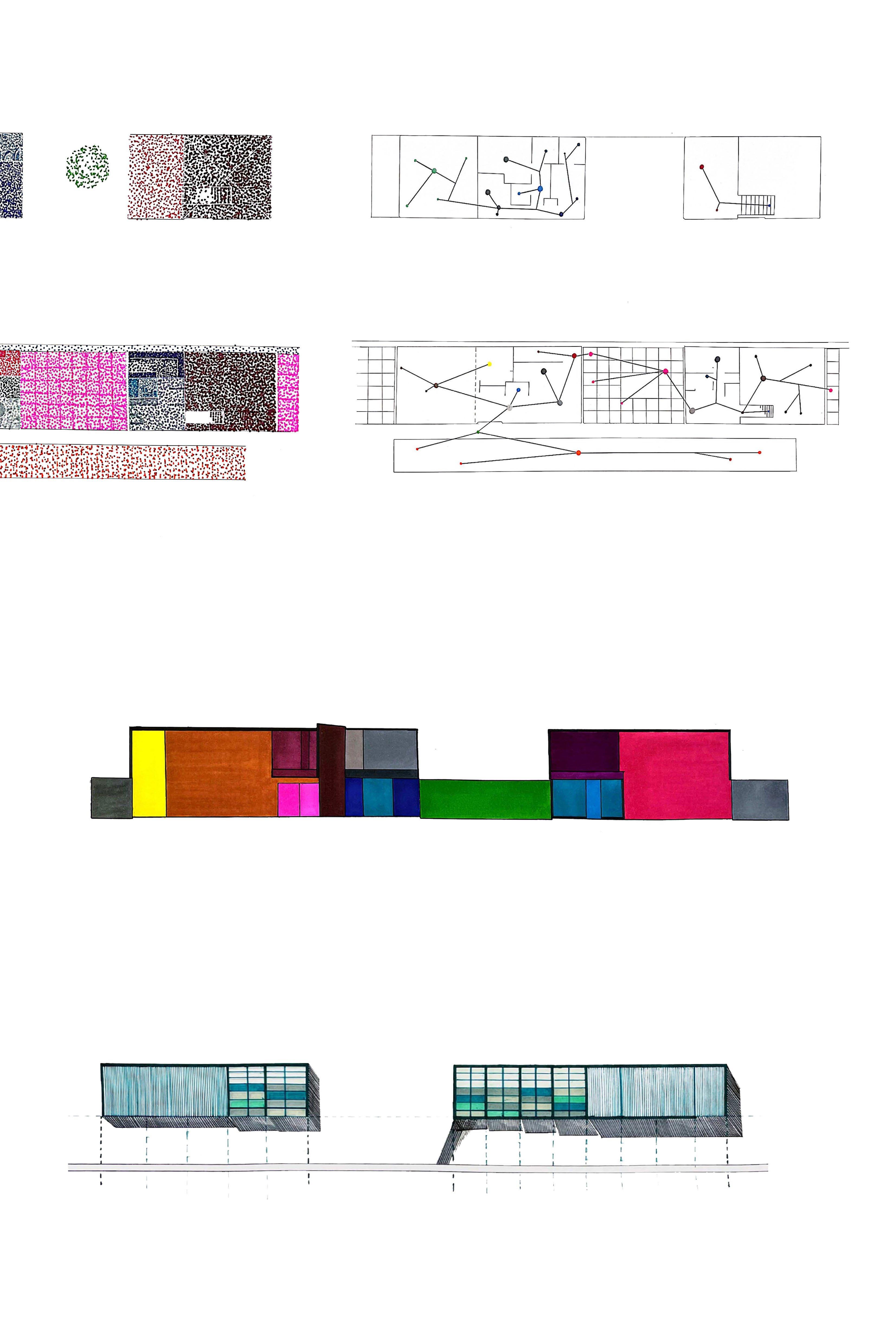
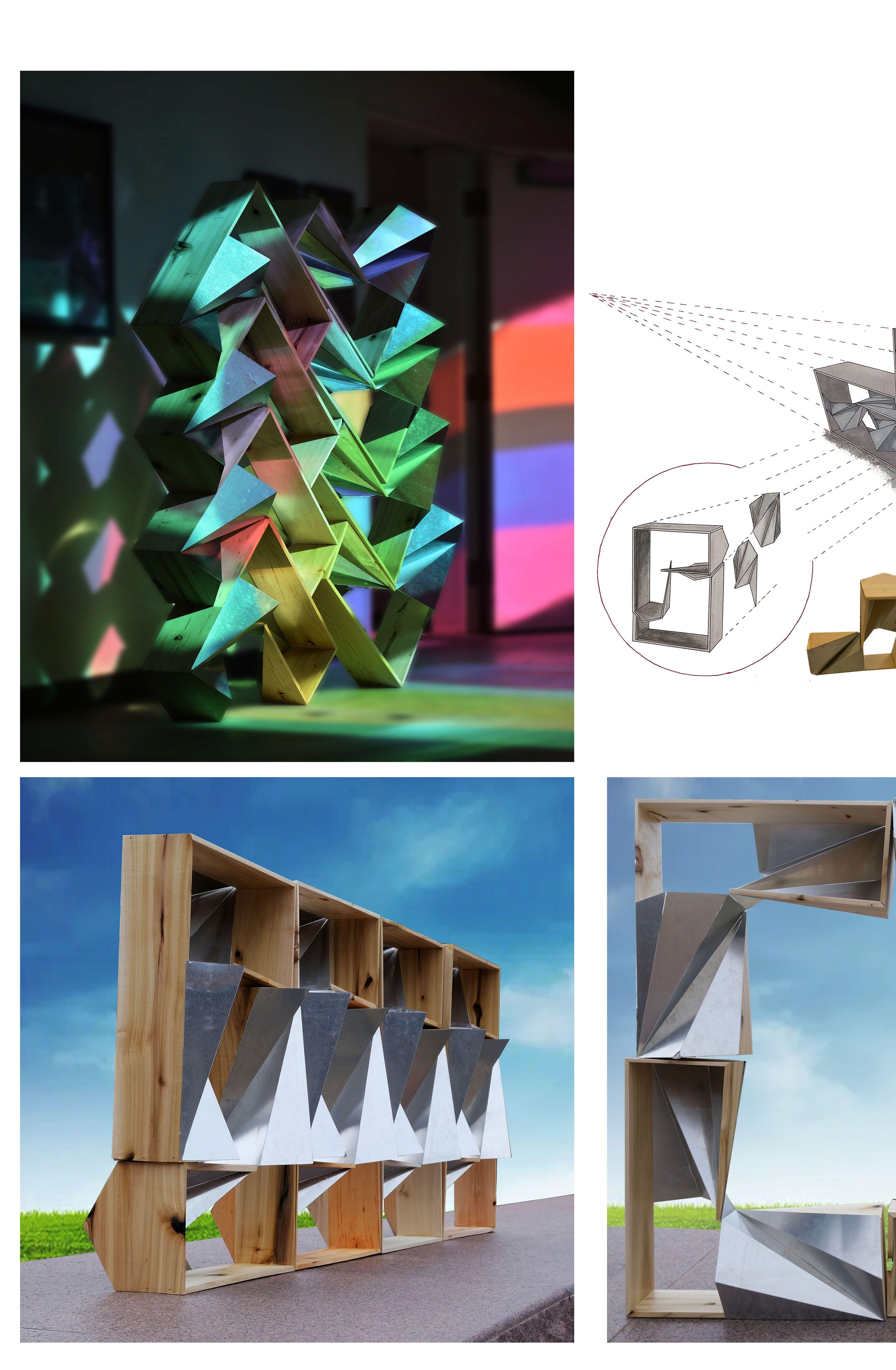

Project Overview:
• Collaborative exploration of symmetrical and repeated forms.
• Utilised wood for the frame and metal for twisty hexagonal sections.
• My primary role was to analyse and design the wooden frame that complements the twisty hexagons.
Design Details:
• Used L-shaped frames to support and integrate hexagonal curves for reflective balance.
• Hexagonal metal curves incorporated for reflection and visual balance.
• Detailed drawings showcasing scale, construction, and seamless wooden-metal connections.
• Construction and Collaboration:
• Hands-on involvement in crafting wooden frames.
• Collaborated with the team to connect steel frames to the wooden structure.
• Achieved portable modular units with versatile design configuration.
Project Overview:
• Detailed analysis of Mpavilion 2018 by Creme Pinos
• Analysis of the site, architectural forms, construction
Contributions:
• Developed a 3D model, plan, and section using Rhino
• Rendered the project in Photoshop to convey its visual
• Diagrams showing the structural frameworks and their
• Demonstrated a deep understanding of architectural
Design and Construction Insights:
• Detailed drawing of the main beam supporting the roof
• Uniquely designed seating areas that not only support
• Emphasis on the pavilion’s open design, facilitating easy
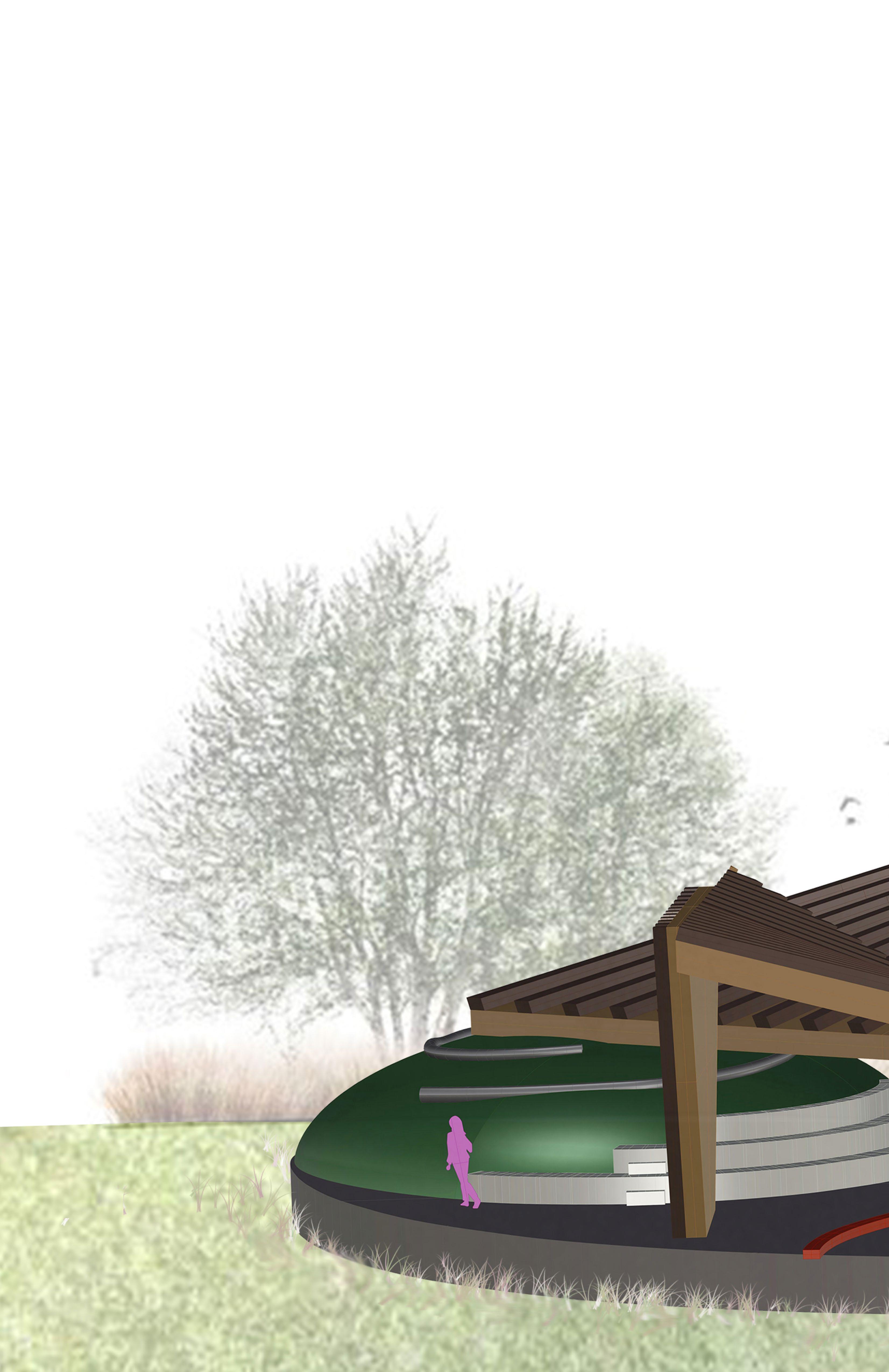
in Melbourne, Australia. methods, and circulation within the pavilion.
Rhino software. visual appeal. their connection with the site. form, construction techniques, within a real-world context.
roof structure, including gutters and rafters in diagram. support the roof but enhance visitor experience. easy circulation from all sides.
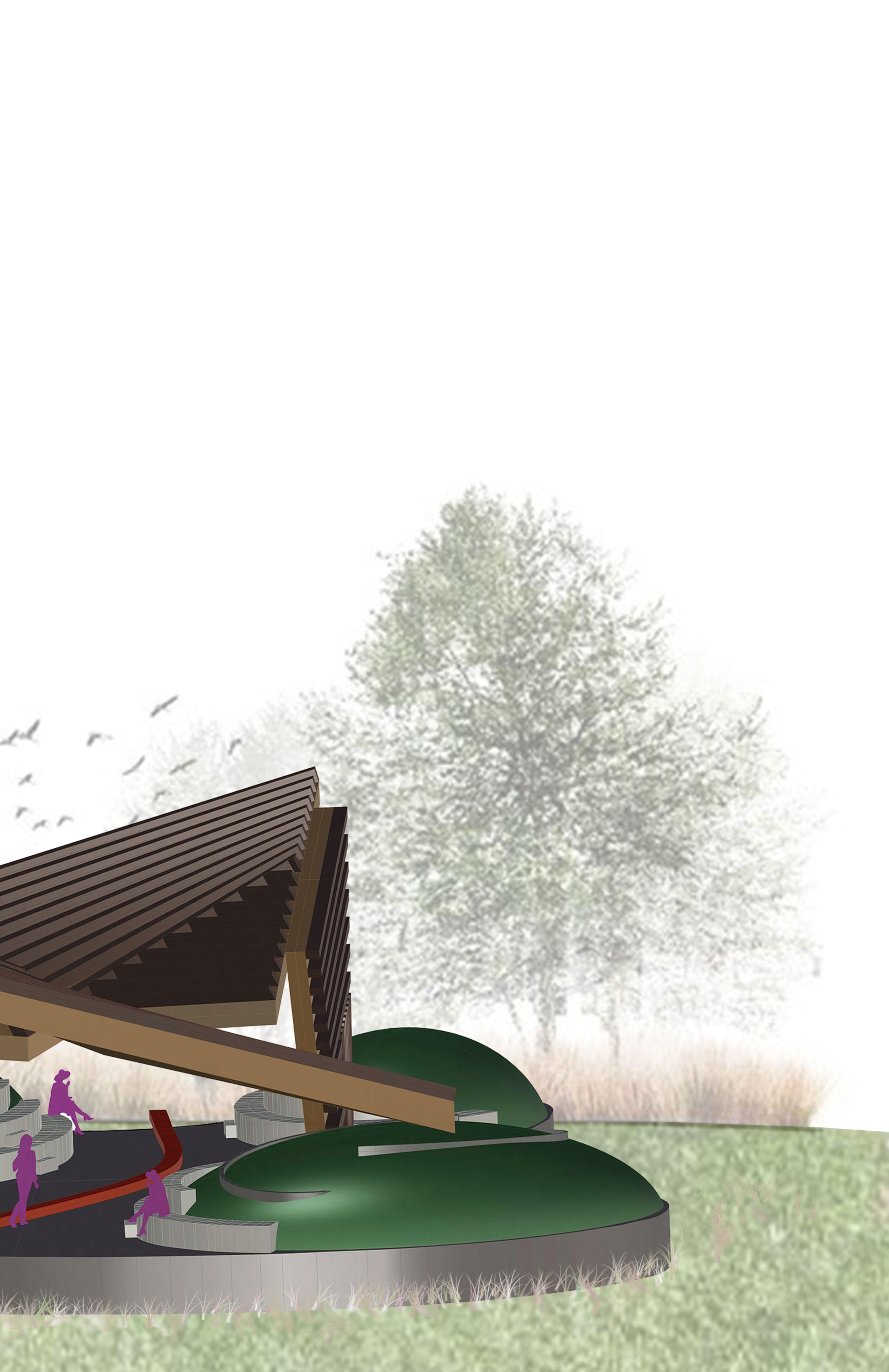
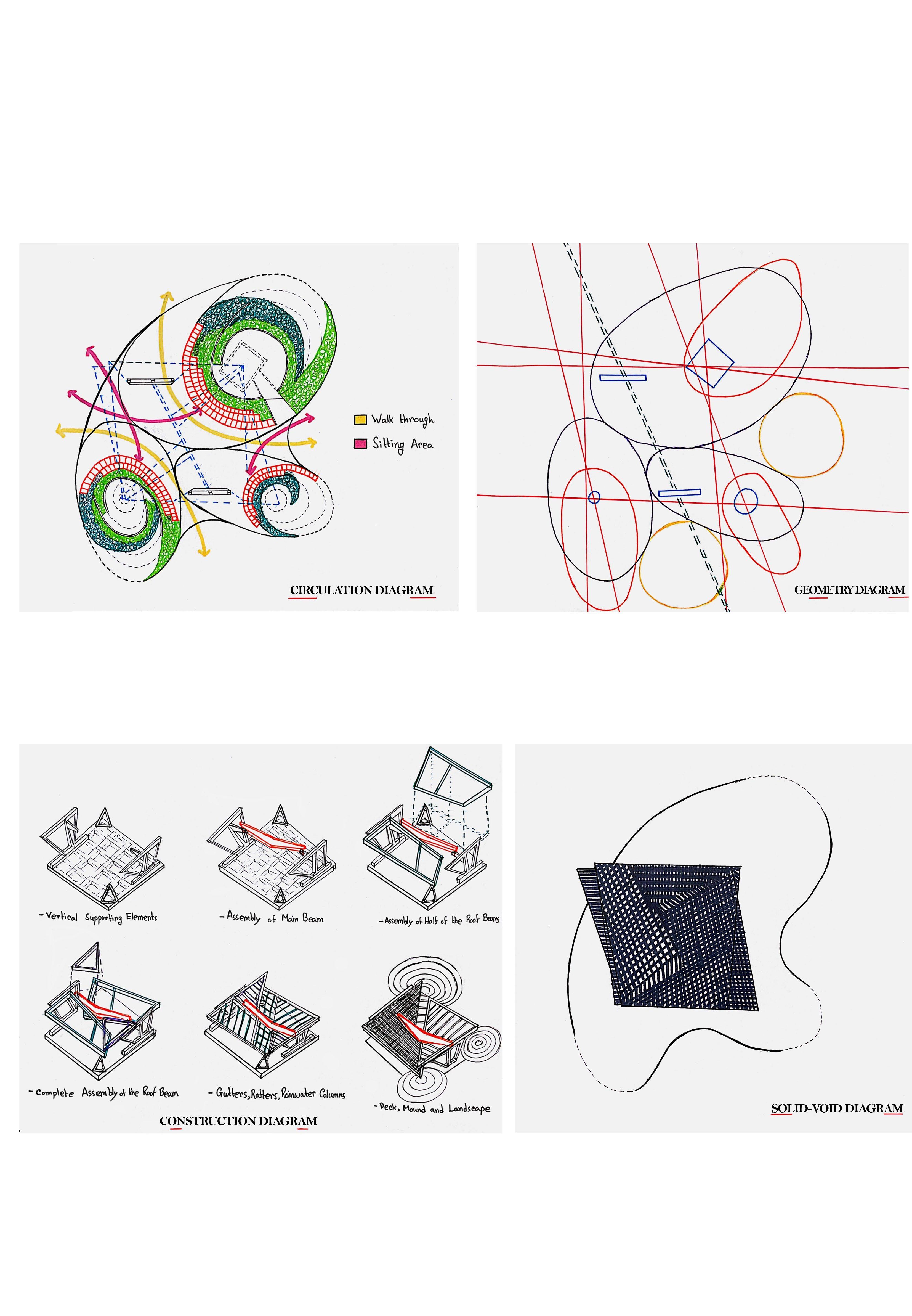
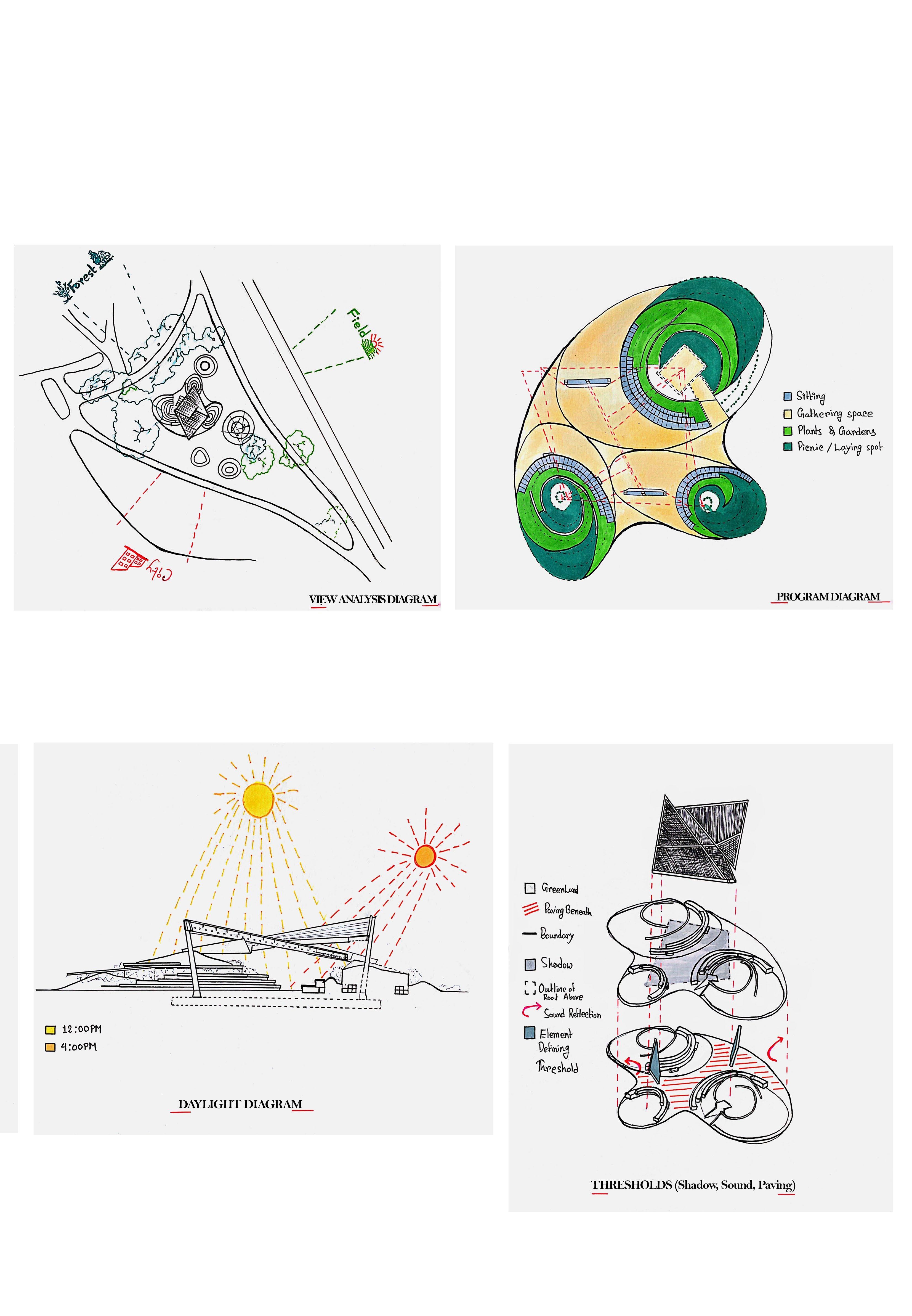
MPavilion 2018 - ELEVATION
Melbourne, Australia
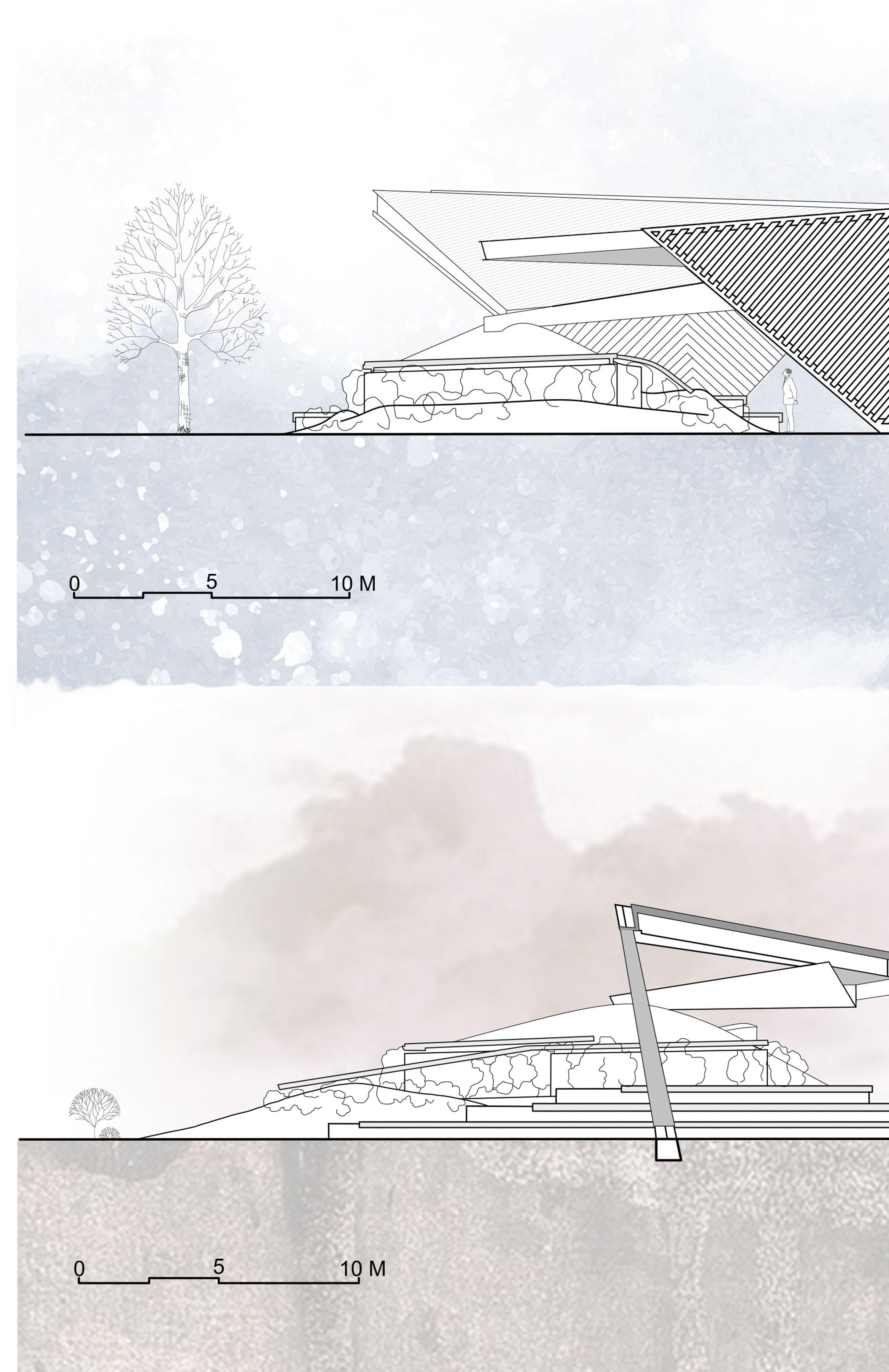
MPavilion 2018 - SECTION
Melbourne, Australia
Carme Pinos Carme Pinos
MEDIUM: SCALE: 9”
My design of DAAP’s through students. ensuring original skylights illuminates connect

design concept for the Cohes-Commons Pavilion emerged from an in-depth site study DAAP’s rooftop. This pavilion serves as a vibrant student hub for recreation.The entry is through the eighth floor library, offers a walking track and scenic seating areas for weary students. The thoughtful use of panels and columns balances openness and privacy while ensuring ample natural light and ventilation. The design inspiration came from DAAP’s original plan, integrating green spaces seamlessly with walking trails. There are three skylights between the shade’s joints for weather protection, and artificial lighting illuminates the pavilion at night, creating a versatile and inviting space for students to connect and unwind.

MEDIUM: VEGETABLE, SPICES SIZE: 32.28’’ * 18.50’’ * 0.59’’
This piece depicts the evolution of life, from a fetus to an old woman falling into her deathbed. I used Indian spices and vegetables, such as: cinnamon, cloves, corn, cumin, cardamom, bay leaves, black pepper, mustard seed and garlic to create the human miniature models.It captures growth and decline, merging art and culture within architecture.
2. CONSTRUCTED
MEDIUM: PLASTER,
This project solid plaster exemplifying and function. various options ultimately, feature to harmonious a central, material available stability and the seamless architectural exemplifies and function harmonious ingenuity.
This commemorates heroes textile industries. are the rapid enduring unsafe exemplifying dedication progress. victim in Bangladesh.
 MEDIUM: NEEDLES, SIZE: 19’’
3. SACRIFICE
MEDIUM: NEEDLES, SIZE: 19’’
3. SACRIFICE
PLASTER, ERASER
project showcases an innovative fusion of plaster cubes and materials, exemplifying the delicate balance between form function. After thorough analysis of options like staples, corks, clay, ultimately, I chose erasers for its lightweight to achieve a challenging but harmonious equilibrium, effectively supporting central, heavier plaster cube.Leveraging weights strategically, it optimises space. The stepped design ensures and aesthetic appeal, demonstrating seamless integration of diverse elements in architectural composition. This project exemplifies materials not only balances form function but also demonstrates a harmonious union of aesthetics and structural ingenuity.
self-portrait commemorates the unsung heroes of Bangladesh’s textile and garment industries. These workers the secret behind the rapid economic growth while enduring low wages and unsafe working conditions, exemplifying resilience and dedication for our nation’s progress. It is a tribute to the victim of Rana Plaza Collaspe Bangladesh.
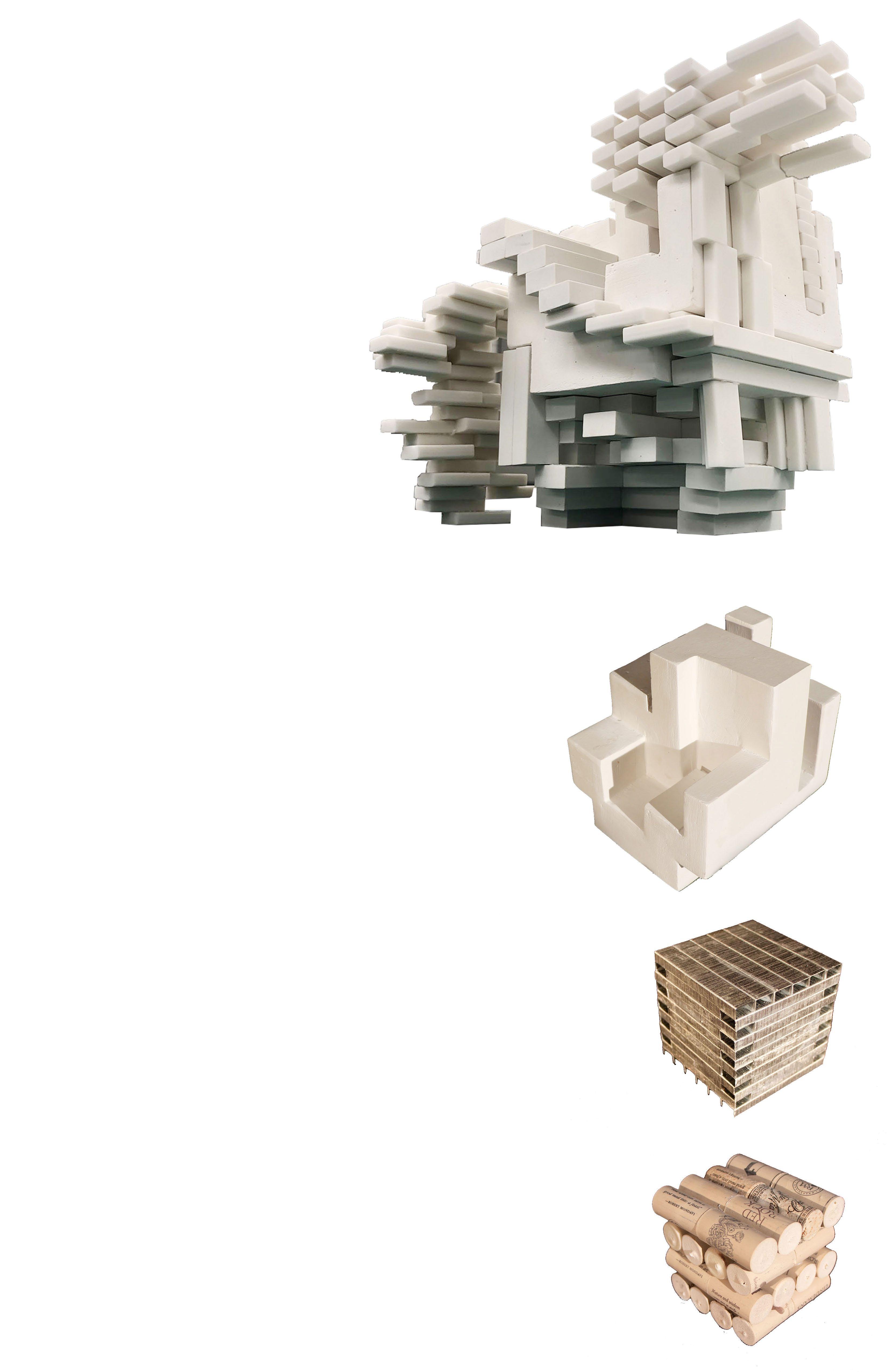
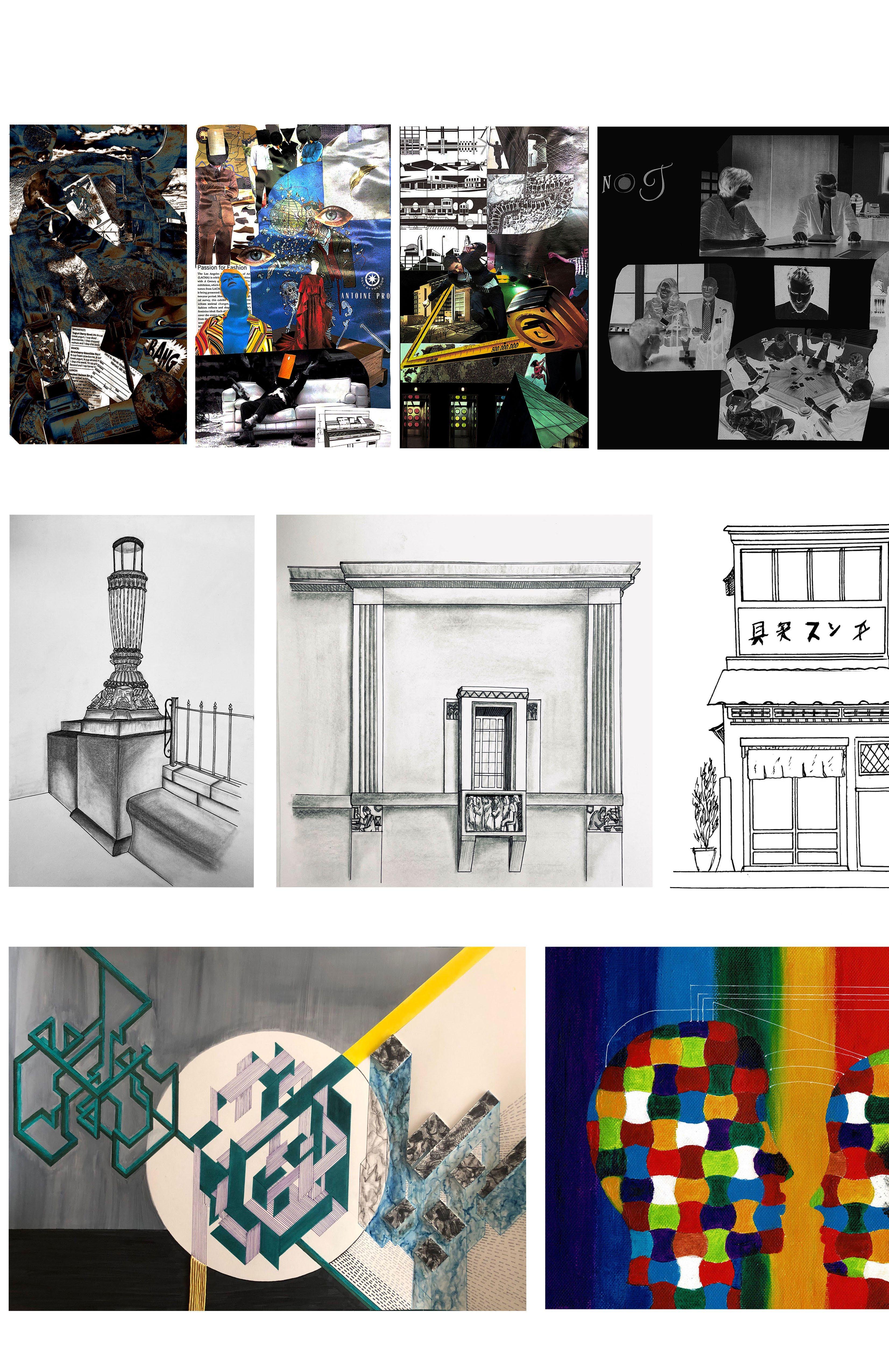 Collages inspired by Movies
Quick Sketches
Paintings( Acrylic color, Gouche, Water color) & pencil sketch
Collages inspired by Movies
Quick Sketches
Paintings( Acrylic color, Gouche, Water color) & pencil sketch
